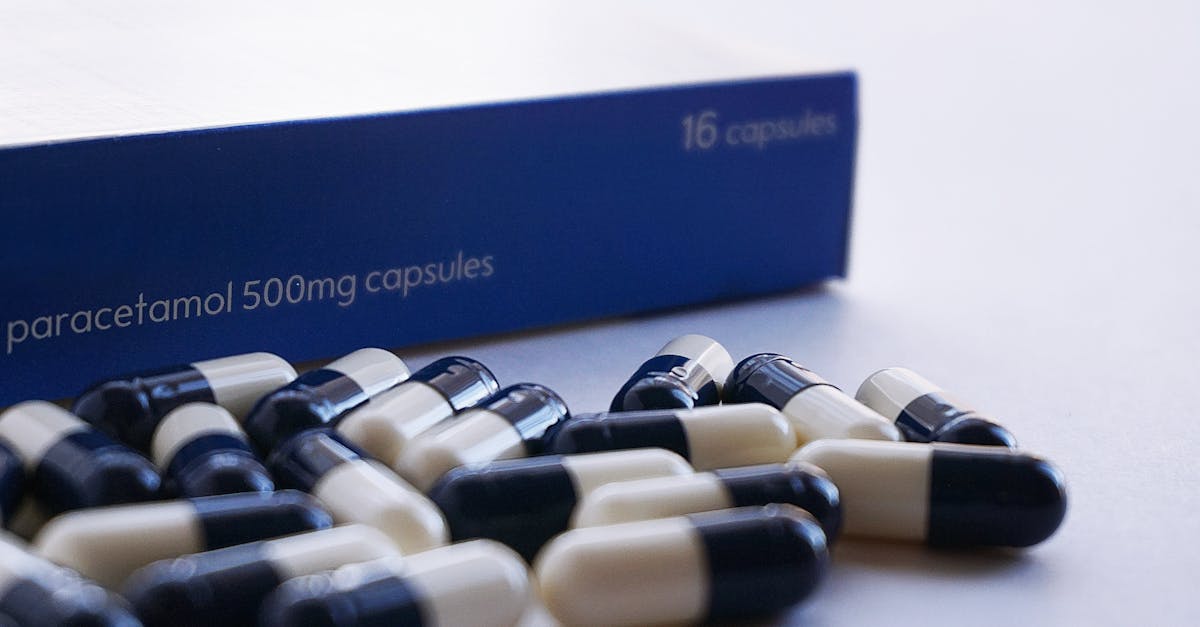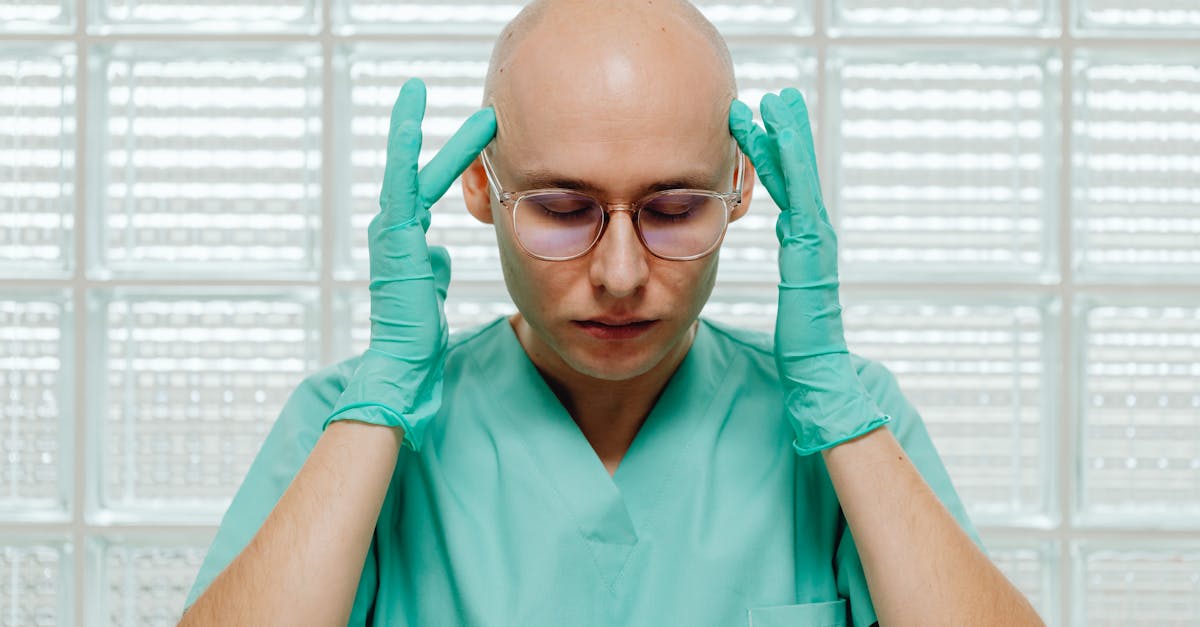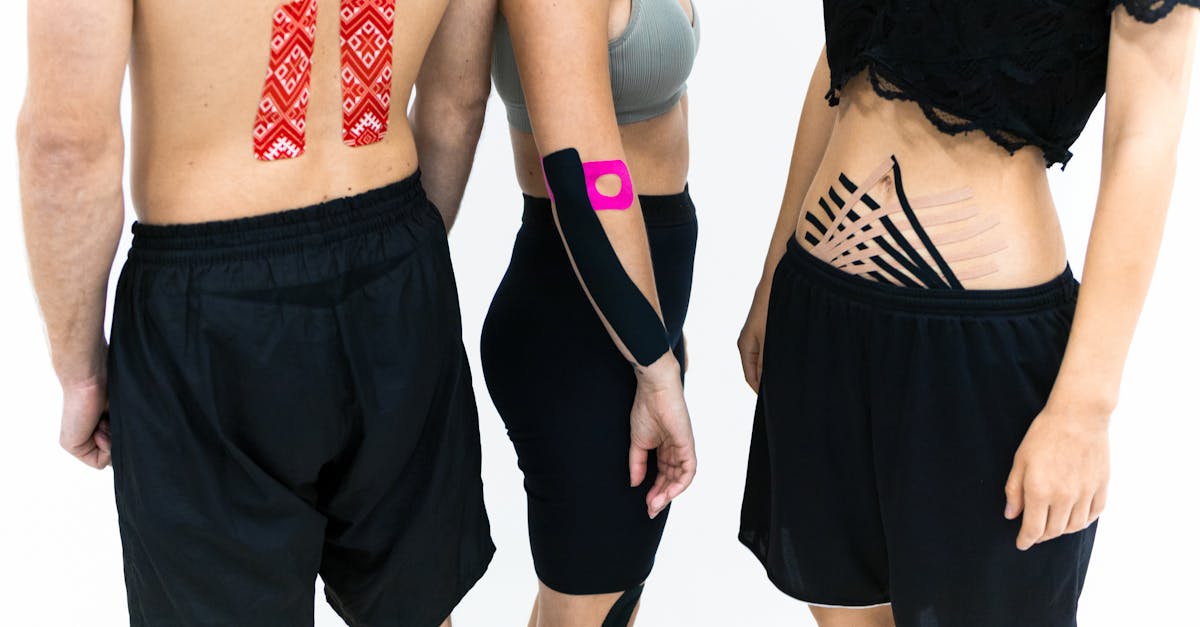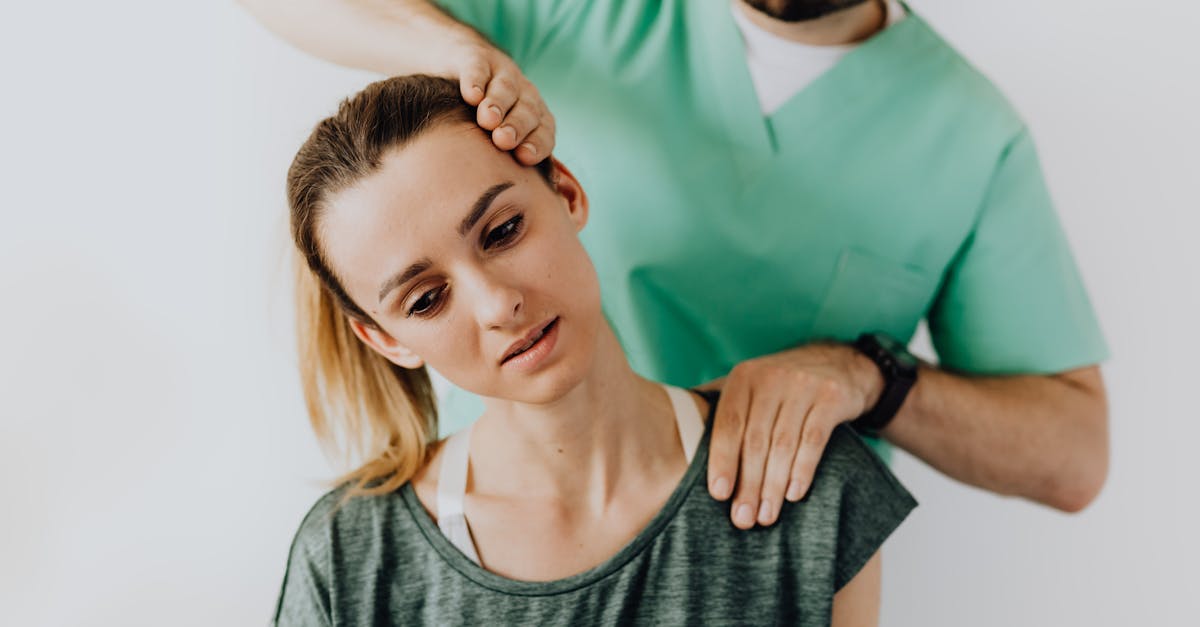In Short , integrating Pulse Align into your headache relief regimen is an accessible and innovative approach designed to alleviate discomfort associated with various headache types. This method focuses on improving neuromuscular health through gentle techniques that enhance posture and relieve tension. Users often experience increased mobility, reduced discomfort, and a profound sense of well-being. By aligning their bodies naturally, individuals can embrace a holistic path towards lasting relief in a comfortable and non-invasive manner, making it a trusted choice for those seeking effective solutions for their headaches.
Easy Strategies for Integrating Pulse Align into Your Headache Relief Regimen focuses on practical methods to incorporate Pulse Align’s innovative techniques into daily wellness routines for headache management. By embracing approaches such as posture correction , gentle neuromuscular recalibration , and mindfulness practices , individuals can enhance their overall well-being. Clients often experience reduced tension, improved mobility, and a greater sense of balance, all crucial for alleviating headaches and optimizing health outcomes.
Recalibrate Your Well-Being with Pulse Align
Pulse Align offers a gentle, innovative approach to restoring your body’s natural balance and improving posture through soft, imperceptible pulses. This method encourages the body to recalibrate itself, which can help promote muscle tone symmetry and reduce discomfort often associated with everyday activity. By enhancing posture and coordination, clients may find a new sense of vitality alongside a more aligned physical state.
Promoting Natural Recovery
At Pulse Align, the focus is not on addressing discomfort directly but rather on supporting the body’s ability to heal and restore itself naturally. By enhancing muscle tone symmetry , many clients report experiencing an increase in overall comfort and relaxation that may accompany improved posture. This regenerative process fosters an environment where the body can find its functional balance, leading to a heightened sense of well-being.
Personalized Experiences You Can Trust
Our personalized approach to wellness allows clients to engage deeply with their journey towards improved well-being. Numerous testimonials highlight the inspiring results enjoyed by our clients, noting significant reductions in neck and shoulder tension, improved postural balance, and increased overall comfort. With our emphasis on holistic wellness, you can feel confident exploring the benefits of this gentle method.
Explore at Pulse Align Today
Are you ready to enhance your wellness journey? Visit Pulse Align to discover more about our services and find a clinic near you, with locations including La Prairie, Mont-Royal, Terrebonne, and many others. Our family-friendly approach welcomes clients of all ages, ensuring that the entire family can benefit from our gentle, non-invasive techniques. Schedule a consultation with us and experience how we can complement your existing wellness journey, working alongside your healthcare services. Join us at Pulse Align and take the first step towards achieving your optimal balance!
Posture Assessment: Regularly check your alignment to minimize tension.Consistent Sessions: Schedule weekly appointments for enhanced effectiveness.Mindful Breathing: Integrate deep breathing exercises before and after sessions.Hydration Focus: Maintain optimal hydration levels to support overall wellness.Physical Activity: Engage in gentle exercises to enhance posture and reduce strain.Client Support Groups: Join communities to share experiences and coping techniques.
Struggling with chronic headaches can be an overwhelming challenge, impacting daily life and well-being. Fortunately, integrating the principles of Pulse Align into your headache relief regimen can provide effective solutions. This guide will outline simple strategies to support your health through natural approaches that promote neuromuscular health , enhance posture, and achieve holistic recalibration. By adopting these techniques, you can empower your journey towards comfort and vitality.
Understanding Pulse Align Principles
Before diving into specific strategies, it is essential to grasp the core principles of Pulse Align . The focus lies in restoring body balance through gentle stimulation and neuro-muscular recalibration. This innovative method is designed to alleviate tension headaches, enhance muscle tone , and foster the body’s inherent ability to heal itself. Understanding these principles will help guide your implementation of practical strategies.
1. Mindful Posture Correction
One of the first steps toward alleviating headache symptoms is to maintain an awareness of your posture. When working at a desk, ensure your chair supports your lower back, and your computer screen is at eye level. Regularly check in with your body, aligning your shoulders over hips. Practicing posture correction not only promotes peace of mind but also reduces tension-related discomfort.
2. Incorporating Gentle Exercises
Engaging in gentle exercises, such as yoga or stretching routines, can significantly benefit headache sufferers. These practices help to release tension in the neck and shoulders while promoting core strengthening . Aim for at least 20 minutes of light physical activity daily. Simple movements can rejuvenate your body’s energy levels while creating a positive impact on headache management.
3. Stress-Reduction Techniques
Adapting stress-reduction techniques is vital in managing headaches. Mindfulness practices, including deep breathing exercises, meditation, and progressive muscle relaxation, cater to reducing stress significantly. Allocate time each day to unwind, clearing your mind and establishing a space for relaxation. This daily ritual can transform your approach to headaches, fostering self-care and serenity.
4. Hydration Awareness
Staying adequately hydrated is fundamental for overall wellness. Dehydration is a common headache trigger, making it essential to ensure you consume a sufficient amount of water throughout the day. Set goals for your hydration intake, and consider installing reminders to drink water regularly. This simple act can make a considerable difference in your headache relief journey.
5. Community Engagement
Connecting with supportive communities can provide encouragement and resources for managing headaches. Join local support groups or online forums focused on headache awareness . Sharing experiences and coping strategies helps to foster a sense of solidarity, reducing the isolation often felt by those suffering from chronic headaches. Engaging with others creates a network of support that may inspire new coping mechanisms in your regimen.
6. Exploring Essential Oils
Aromatherapy, particularly through essential oils, can be an effective addition to your headache relief strategies. Using oils such as peppermint and lavender can create soothing experiences. Apply these oils on temples or use a diffuser during relaxation sessions to enhance your tranquility routine. Exploring new properties of essential oils may provide you an effective pathway to relief.
7. Pressure Point Techniques
Utilizing acupressure can offer immediate relief from headache pain. Focus on specific pressure points on your body that correspond with headache symptoms. For example, applying pressure to the webbing between the thumb and index finger can effectively alleviate tension. Learning these techniques and incorporating them into your self-care routine can make a significant difference in your headache relief journey.
Embracing these strategies into your routine will empower you to traditionally approach headache management effectively. By aligning with the principles of Pulse Align , you can foster a healthier lifestyle that enhances neuromuscular health and overall balance. Take the step toward well-being today and explore the positive impact of integrating these practices alongside your existing healthcare regimen.
Strategy
Description
Gentle Recalibration
Incorporate gentle techniques that help align body mechanics for improved balance.
Mindfulness Practices
Engage in meditation and breathing exercises to enhance mental clarity and reduce stress.
Posture Improvement
Focus on developing better posture to alleviate tension and promote well-being.
Community Support
Join local wellness groups to share experiences and learn from others’ journeys.
Hydration Techniques
Incorporate regular hydration reminders to help prevent headache triggers.
Exercise Guidance
Implement light physical activities such as walking or stretching to enhance overall health.
Essential Oil Application
Use calming essential oils for relaxation and to foster a soothing environment.
Regular Check-ins
Schedule periodic assessments of your wellness journey to identify adjustments for better outcomes.
Core Strengthening
Include core-strengthening exercises to improve stability and reduce discomfort.
Mindful Relaxation Routine
Establish a daily routine focusing on relaxation to reduce stress and tension.
Transformative Experiences through Pulse Align: Client Testimonials
“Experiencing chronic headaches for years had left me feeling hopeless. After incorporating Pulse Align into my healing regimen, I’ve felt a significant shift. Their unique approach has truly empowered my body to recalibrate, leading to fewer headaches and a stronger sense of balance. As a resident of Mont-Royal, I’m grateful to have such an effective resource in my community.” – Julie M.
“Living in Terrebonne, I was initially skeptical about how well Pulse Align would work for me. However, after just a few sessions, it became evident that my body’s natural ability to restore balance was greatly enhanced. The gentle techniques used have alleviated my tension headaches, making my days much more enjoyable. I highly recommend this approach to anyone struggling with similar issues.” – Mark T.
“As a client in Chicoutimi, what struck me the most was how Pulse Align focuses on natural improvement. My headaches have decreased significantly, and I now enjoy a better quality of life thanks to their holistic methods. The professional staff made me feel supported throughout my recovery journey. I can’t thank them enough for helping me regain control over my health.” – Sarah L.
“In Châteauguay, I found the solutions I was desperately searching for in Pulse Align. Their techniques not only helped to relieve my headaches, but they also improved my overall wellness. The ability of my body to connect and heal itself through these sessions has been remarkable. I look forward to every visit!” – Alex H.
“I started my wellness journey in Deux-Montagnes, hoping for a miracle in managing my migraines. Pulse Align exceeded my expectations. Their focus on revitalizing the body’s innate healing capabilities has made all the difference in my life. I now trust my body more, and every session solidifies that trust.” – Emily R.
Clients in regions such as Saint-Jérôme and Sainte-Marie have also benefited from Pulse Align’s tailored approach. Many have reported not just improvements in headache frequency, but a holistic enhancement in their overall wellbeing. The supportive environment and collaborative nature of the staff make it a perfect fit for anyone on their wellness journey.
Visit our Our Clinics page to discover how Pulse Align can help you as well. This practice works effortlessly alongside other healthcare teams, ensuring that clients and their families receive comprehensive support throughout their wellness journey.
In today’s fast-paced world, chronic headaches have become a common ailment, affecting countless individuals. The search for effective headache relief often leads people to innovative solutions that promise comfort and improved quality of life. One such resource is Pulse Align, an organization committed to providing natural support for those suffering from headaches. Implementing strategies to integrate Pulse Align into your headache relief regimen can be a game-changer, offering a holistic approach to managing headache symptoms.
When considering such a regimen, it’s essential to understand how Pulse Align combines cutting-edge techniques with traditional healing methods. At the forefront of this movement is Dr. Sylvain Desforges, a respected figure in the fields of osteopathy, naturopathy, and manual medicine. As the founding president of TAGMED clinics and the ACMA association, Dr. Desforges has dedicated his career to healthcare innovation, particularly chronic pain management. His expertise extends to the integration of advanced technologies, such as spinal decompression, laser therapy, and shockwave therapy. This multifaceted approach allows for an evidence-based methodology focused on optimizing patient health and well-being.
To incorporate Pulse Align into your headache relief routine, start by becoming familiar with the various techniques they offer. Understanding the unique benefits of each approach is crucial—whether it involves gentle neuromuscular recalibration or other holistic practices. This knowledge will empower you to select strategies that resonate most with your body’s specific needs. A vital component of this journey is to engage with the Pulse Align community, where shared experiences can foster connection and support for your wellness journey.
Another effective strategy involves combining Pulse Align techniques with mindfulness practices. Integrating techniques like meditation, deep breathing, or progressive muscle relaxation can significantly impact your overall emotional well-being. These practices reduce the tension and stress that often exacerbate headaches, promoting a calmer state of mind. Dr. Desforges emphasizes the importance of addressing the underlying causes of headaches, and cultivating inner peace plays a critical role in doing just that.
Regular physical activity also complements the Pulse Align regimen. Exercise can boost your body’s natural pain-relieving chemicals, endorphins, which are crucial in reducing tension and improving mood. Whether it’s stretching, light yoga, or brisk walking in local parks in places like Montréal or Mont-Royal, staying active will empower you to manage headache symptoms more effectively. Don’t hesitate to consult with a healthcare provider regarding specific exercises that suit your personal conditions.
The integration of natural healing techniques, as offered by Pulse Align, allows individuals to restore balance and alignment to their bodies. Those with chronic headaches often find that addressing posture through gentle adjustments or alignment exercises can alleviate symptoms significantly. This is where Dr. Desforges’ knowledge shines; he advocates for modifications in body mechanics that help clients navigate their discomfort more easily. Incorporating these adjustments into your daily routine can yield meaningful changes over time.
Finally, maintaining open communication with healthcare professionals, such as those at TAGMED clinics, ensures that your integration process into Pulse Align methods remains tailored to your unique needs. Regular evaluations and consultations enable continuous improvements to your regimen, ensuring that you receive the best care possible. By adopting these strategies, you can embark on a transformative journey toward headache relief and enhanced well-being.
TAGMED’s Neurovertebral Decompression Technology and Its Impact on Chronic Pain Management
Mechanism of Action
TAGMED’s neurovertebral decompression method operates by applying a controlled and progressive traction force to the spine. This technique creates a gentle pulling effect that increases the space between vertebrae, thereby reducing pressure on intervertebral discs and nerve roots . With this enhanced spacing, fluids can circulate more effectively in the targeted area, which is crucial for proper spinal health. This process significantly diminishes inflammation and pain by promoting better fluid dynamics, reducing nerve compression, and fostering an environment where healing can take place.
Specific Benefits
This non-invasive approach has shown remarkable efficacy in relieving chronic pain and symptoms associated with conditions like herniated discs , bulging discs , and moderate to severe spinal stenosis and foraminal stenosis. By alleviating the pressure on nerve structures, the neurovertebral decompression technique contributes to faster recovery times and improved quality of life for patients. Many individuals report sustained reductions in pain levels and improved mobility, enabling them to resume daily activities with confidence and comfort.
Comparison with Other Treatments
When comparing TAGMED’s neurovertebral decompression technology to other common treatment methods, such as analgesics , corticosteroid injections, traditional physiotherapy, and surgeries, it becomes apparent why this method is so compelling. Unlike surgical procedures, which carry inherent risks and lengthy recovery times, neurovertebral decompression is a non-invasive treatment with minimal side effects. It also decreases reliance on medication, which can cause dependency and rebound headaches. Overall, patients often find that they can achieve pain relief without the complications associated with more invasive interventions, making this approach a practical choice for effective chronic pain management.
Case Studies or Testimonials
Many patients have shared their positive experiences with TAGMED’s neurovertebral decompression therapy. For instance, a patient suffering from chronic back pain reported a significant drop in their discomfort level after just a few sessions, allowing them to engage in activities they had previously found difficult. Another patient noted enhanced mobility and strength, which enabled her to return to her active lifestyle more quickly than expected. These testimonials underscore the therapy’s practicality and effectiveness in alleviating chronic pain while promoting overall wellness.
By focusing on both the root causes of discomfort and the restoration of functional harmony , TAGMED’s neurovertebral decompression therapy serves as a beacon of hope for those struggling with chronic pain.
Effective Integration of Pulse Align into Your Headache Relief Regimen
Integrating Pulse Align into your headache relief regimen can empower you to take control of your health effectively. By adopting simple yet impactful strategies, you can enhance your overall wellness and minimize the frequency and intensity of headaches. A critical first step is to become acquainted with your body’s unique needs by maintaining a headache diary. This will help identify your headache triggers and allow you to tailor your approach for optimal relief.
Another effective strategy lies in establishing a consistent routine that incorporates gentle movements and relaxation techniques . Simple exercises focusing on posture improvement can significantly relieve tension in your neck and shoulders, areas often responsible for chronic headaches. Additionally, combining mindful practices such as meditation and deep breathing can promote relaxation, further alleviating stress-induced headaches.
Utilizing the expertise of Pulse Align practitioners adds another layer of support in managing your headaches. They can design personalized strategies based on your specific requirements, integrating techniques like neuromuscular recalibration and pressure point techniques for targeted relief. Engaging in community support programs can foster a sense of belonging and provide valuable resources as you embark on your wellness journey.
Lastly, remember the importance of hydration and nutrition in your overall health. Staying well-hydrated and consuming a balanced diet rich in nutrients can play a significant role in minimizing headache occurrences. By combining these strategies into your daily life, you can seamlessly integrate Pulse Align into your routine, enhancing your quality of life and making strides towards lasting headache relief.
Do you suffer from a chronic condition that responds little or not at all to conservative treatments?
In today’s fast-paced world, many individuals seek non-invasive solutions to address discomfort and restore balance in their lives. Pulse Align offers an innovative method that helps restore the body’s natural balance and posture through gentle, imperceptible pulses. By focusing on improving muscle tone symmetry, this holistic approach encourages the body to recalibrate itself naturally, often leading to reduced tension and an enhanced sense of well-being.
Rather than targeting discomfort directly, Pulse Align promotes the body’s inherent ability to find its equilibrium. This gentle method nurtures the natural processes of the body, resulting in remarkable improvements in posture, overall comfort, and wellness. Many of our clients have celebrated their journey of self-discovery, experiencing a renewed sense of harmony and vitality by embracing Pulse Align’s approach.
Pulse Align prides itself on providing a personalized experience that caters to the unique needs of each client. Numerous testimonials highlight inspiring stories from individuals who have noticed significant reductions in discomfort and enhancements to their overall wellness. Clients have reported fascinating improvements in their experiences, often noting positive changes in neck and back tension as well as an uplifted state of mind. This holistic pathway to wellness underscores the potential for enhancing personal well-being without directly tackling specific symptoms.
We invite you to explore the benefits of Pulse Align by visiting our website to learn more. Discover our conveniently located clinics in cities such as La Prairie, Mont-Royal, Terrebonne, and many more, where we offer safe, non-invasive, and family-friendly services that complement your existing healthcare routine. Book a consultation today for yourself or your entire family. Remember, Pulse Align is here to support your journey towards well-being while working alongside your healthcare team, never replacing it but enhancing it.
To learn more about our services and to book an appointment, visit our website: Pulse Align .
Frequently Asked Questions
Headache and Migraine
What’s the difference between a headache and a migraine?
A headache is often less intense and short-lived, while a migraine is characterized by throbbing pain, sometimes with nausea, sensitivity to light and sound.
Does bright light trigger migraines?
Yes, light sensitivity is common, and bright light can worsen a migraine attack.
Does progressive muscle relaxation help?
Yes, it reduces muscle tension and stress, preventing tension-type headaches.
Do strong smells trigger migraines?
Yes, certain strong odors (perfume, solvents) can provoke or worsen attacks.
Can identifying triggers reduce migraines?
Yes, keeping a headache diary helps identify triggers so you can avoid them.
Do coenzyme Q10 or magnesium help?
Some studies suggest magnesium or coenzyme Q10 supplements may reduce migraine frequency.
Does noise trigger migraines?
Yes, hypersensitivity to sound is common, and loud noises can worsen the pain.
How to differentiate a migraine from a tension headache?
Tension headaches cause diffuse, moderate pressure. Migraines are often more severe, pulsating, one-sided, and accompanied by associated symptoms.
Do children get migraines?
Yes, children can experience migraines, often shorter but just as painful.
Can relaxation techniques help?
Yes, meditation, yoga, deep breathing, or biofeedback can reduce frequency and intensity of attacks.
References No parsed citations found. Full shortcode output:
722490
MDAVM6MK
1
apa
20
default
3867
https://pulsealignchateauguay.com/wp-content/plugins/zotpress/
%7B%22status%22%3A%22success%22%2C%22updateneeded%22%3Afalse%2C%22instance%22%3Afalse%2C%22meta%22%3A%7B%22request_last%22%3A0%2C%22request_next%22%3A0%2C%22used_cache%22%3Atrue%7D%2C%22data%22%3A%5B%7B%22key%22%3A%22474E5C2I%22%2C%22library%22%3A%7B%22id%22%3A722490%7D%2C%22meta%22%3A%7B%22creatorSummary%22%3A%22Al-Khazali%20et%20al.%22%2C%22parsedDate%22%3A%222024%22%2C%22numChildren%22%3A1%7D%2C%22bib%22%3A%22%26lt%3Bdiv%20class%3D%26quot%3Bcsl-bib-body%26quot%3B%20style%3D%26quot%3Bline-height%3A%202%3B%20padding-left%3A%201em%3B%20text-indent%3A-1em%3B%26quot%3B%26gt%3B%5Cn%20%20%26lt%3Bdiv%20class%3D%26quot%3Bcsl-entry%26quot%3B%26gt%3BAl-Khazali%2C%20H.%20M.%2C%20Al-Sayegh%2C%20Z.%2C%20Younis%2C%20S.%2C%20Christensen%2C%20R.%20H.%2C%20Ashina%2C%20M.%2C%20Schytz%2C%20H.%20W.%2C%20%26amp%3B%20Ashina%2C%20S.%20%282024%29.%20Systematic%20review%20and%20meta-analysis%20of%20Neck%20Disability%20Index%20and%20Numeric%20Pain%20Rating%20Scale%20in%20patients%20with%20migraine%20and%20tension-type%20headache.%20%26lt%3Bi%26gt%3BCephalalgia%26lt%3B%5C%2Fi%26gt%3B%2C%20%26lt%3Bi%26gt%3B44%26lt%3B%5C%2Fi%26gt%3B%288%29%2C%2003331024241274266.%20%26lt%3Ba%20class%3D%26%23039%3Bzp-DOIURL%26%23039%3B%20href%3D%26%23039%3Bhttps%3A%5C%2F%5C%2Fdoi.org%5C%2F10.1177%5C%2F03331024241274266%26%23039%3B%26gt%3Bhttps%3A%5C%2F%5C%2Fdoi.org%5C%2F10.1177%5C%2F03331024241274266%26lt%3B%5C%2Fa%26gt%3B%26lt%3B%5C%2Fdiv%26gt%3B%5Cn%26lt%3B%5C%2Fdiv%26gt%3B%22%2C%22data%22%3A%7B%22itemType%22%3A%22journalArticle%22%2C%22title%22%3A%22Systematic%20review%20and%20meta-analysis%20of%20Neck%20Disability%20Index%20and%20Numeric%20Pain%20Rating%20Scale%20in%20patients%20with%20migraine%20and%20tension-type%20headache%22%2C%22creators%22%3A%5B%7B%22creatorType%22%3A%22author%22%2C%22firstName%22%3A%22Haidar%20M.%22%2C%22lastName%22%3A%22Al-Khazali%22%7D%2C%7B%22creatorType%22%3A%22author%22%2C%22firstName%22%3A%22Zainab%22%2C%22lastName%22%3A%22Al-Sayegh%22%7D%2C%7B%22creatorType%22%3A%22author%22%2C%22firstName%22%3A%22Samaira%22%2C%22lastName%22%3A%22Younis%22%7D%2C%7B%22creatorType%22%3A%22author%22%2C%22firstName%22%3A%22Rune%20H.%22%2C%22lastName%22%3A%22Christensen%22%7D%2C%7B%22creatorType%22%3A%22author%22%2C%22firstName%22%3A%22Messoud%22%2C%22lastName%22%3A%22Ashina%22%7D%2C%7B%22creatorType%22%3A%22author%22%2C%22firstName%22%3A%22Henrik%20W.%22%2C%22lastName%22%3A%22Schytz%22%7D%2C%7B%22creatorType%22%3A%22author%22%2C%22firstName%22%3A%22Sait%22%2C%22lastName%22%3A%22Ashina%22%7D%5D%2C%22abstractNote%22%3A%22Background%5Cn%20%20%20%20%20%20%20%20%20%20%20%20%20%20The%20present%20study%20aimed%20to%20assess%20the%20burden%20of%20neck%20pain%20in%20adults%20with%20migraine%20and%20tension-type%20headache%20%28TTH%29%2C%20utilizing%20the%20Neck%20Disability%20Index%20%28NDI%29%20and%20Numeric%20Pain%20Rating%20Scale%20%28NPRS%29.%5Cn%20%20%20%20%20%20%20%20%20%20%20%20%5Cn%20%20%20%20%20%20%20%20%20%20%20%20%5Cn%20%20%20%20%20%20%20%20%20%20%20%20%20%20Methods%5Cn%20%20%20%20%20%20%20%20%20%20%20%20%20%20%5Cn%20%20%20%20%20%20%20%20%20%20%20%20%20%20%20%20A%20systematic%20literature%20search%20was%20conducted%20on%20PubMed%20and%20Embase%20to%20identify%20observational%20studies%20assessing%20NDI%20and%20NPRS%20in%20populations%20with%20migraine%20or%20TTH.%20The%20screening%20of%20articles%20was%20independently%20performed%20by%20two%20investigators%20%28HMA%20and%20ZA%29.%20Pooled%20mean%20estimates%20were%20calculated%20through%20random-effects%20meta-analysis.%20The%20I%5Cn%20%20%20%20%20%20%20%20%20%20%20%20%20%20%20%202%5Cn%20%20%20%20%20%20%20%20%20%20%20%20%20%20%20%20statistic%20assessed%20between-study%20heterogeneity%2C%20and%20meta-regression%20further%20explored%20heterogeneity%20factors.%5Cn%20%20%20%20%20%20%20%20%20%20%20%20%20%20%5Cn%20%20%20%20%20%20%20%20%20%20%20%20%5Cn%20%20%20%20%20%20%20%20%20%20%20%20%5Cn%20%20%20%20%20%20%20%20%20%20%20%20%20%20Results%5Cn%20%20%20%20%20%20%20%20%20%20%20%20%20%20%5Cn%20%20%20%20%20%20%20%20%20%20%20%20%20%20%20%20Thirty-three%20clinic-based%20studies%20met%20the%20inclusion%20criteria.%20For%20participants%20with%20migraine%2C%20the%20pooled%20mean%20NDI%20score%20was%2016.2%20%2895%25%20confidence%20interval%20%28CI%29%20%3D%2013.2%5Cu201319.2%2C%20I%5Cn%20%20%20%20%20%20%20%20%20%20%20%20%20%20%20%202%5Cu2009%5Cn%20%20%20%20%20%20%20%20%20%20%20%20%20%20%20%20%3D%5Cu200999%25%29.%20Additionally%2C%20the%20mean%20NDI%20was%205.5%20%2895%25%20CI%20%3D%204.11%5Cu20136.8%2C%20p%5Cu2009%26lt%3B%5Cu20090.001%29%20scores%20higher%20in%20participants%20with%20chronic%20compared%20to%20episodic%20migraine.%20The%20pooled%20mean%20NDI%20score%20for%20participants%20with%20TTH%20was%2013.7%20%2895%25%20CI%20%3D%204.9%5Cu201322.4%2C%20I%5Cn%20%20%20%20%20%20%20%20%20%20%20%20%20%20%20%202%5Cu2009%5Cn%20%20%20%20%20%20%20%20%20%20%20%20%20%20%20%20%3D%5Cu200999%25%29.%20In%20addition%2C%20the%20meta-analysis%20revealed%20a%20mean%20NPRS%20score%20of%205.7%20%2895%25%20CI%20%3D%205.1%5Cu20136.2%2C%20I%5Cn%20%20%20%20%20%20%20%20%20%20%20%20%20%20%20%202%5Cn%20%20%20%20%20%20%20%20%20%20%20%20%20%20%20%20%5Cu2009%3D%5Cu200995%25%29%20across%20all%20participants%20with%20migraine.%5Cn%20%20%20%20%20%20%20%20%20%20%20%20%20%20%5Cn%20%20%20%20%20%20%20%20%20%20%20%20%5Cn%20%20%20%20%20%20%20%20%20%20%20%20%5Cn%20%20%20%20%20%20%20%20%20%20%20%20%20%20Conclusions%5Cn%20%20%20%20%20%20%20%20%20%20%20%20%20%20This%20systematic%20review%20and%20meta-analysis%20shows%20a%20greater%20degree%20of%20neck%20pain-related%20disability%20in%20migraine%20compared%20to%20TTH.%20Nevertheless%2C%20the%20generalizability%20of%20these%20findings%20is%20constrained%20by%20methodological%20variations%20identified%20in%20the%20current%20literature.%22%2C%22date%22%3A%2208%5C%2F2024%22%2C%22language%22%3A%22en%22%2C%22DOI%22%3A%2210.1177%5C%2F03331024241274266%22%2C%22ISSN%22%3A%220333-1024%2C%201468-2982%22%2C%22url%22%3A%22https%3A%5C%2F%5C%2Fjournals.sagepub.com%5C%2Fdoi%5C%2F10.1177%5C%2F03331024241274266%22%2C%22collections%22%3A%5B%22MDAVM6MK%22%5D%2C%22dateModified%22%3A%222024-12-16T17%3A38%3A46Z%22%7D%7D%2C%7B%22key%22%3A%22UL3PWZM8%22%2C%22library%22%3A%7B%22id%22%3A722490%7D%2C%22meta%22%3A%7B%22creatorSummary%22%3A%22Fern%5Cu00e1ndez%5Cu2010de%5Cu2010las%5Cu2010Pe%5Cu00f1as%20et%20al.%22%2C%22parsedDate%22%3A%222007%22%2C%22numChildren%22%3A1%7D%2C%22bib%22%3A%22%26lt%3Bdiv%20class%3D%26quot%3Bcsl-bib-body%26quot%3B%20style%3D%26quot%3Bline-height%3A%202%3B%20padding-left%3A%201em%3B%20text-indent%3A-1em%3B%26quot%3B%26gt%3B%5Cn%20%20%26lt%3Bdiv%20class%3D%26quot%3Bcsl-entry%26quot%3B%26gt%3BFern%26%23xE1%3Bndez%26%23x2010%3Bde%26%23x2010%3Blas%26%23x2010%3BPe%26%23xF1%3Bas%2C%20C.%2C%20Cuadrado%2C%20M.%20L.%2C%20%26amp%3B%20Pareja%2C%20J.%20A.%20%282007%29.%20Myofascial%20Trigger%20Points%2C%20Neck%20Mobility%2C%20and%20Forward%20Head%20Posture%20in%20Episodic%20Tension%26%23x2010%3BType%20Headache.%20%26lt%3Bi%26gt%3BHeadache%3A%20The%20Journal%20of%20Head%20and%20Face%20Pain%26lt%3B%5C%2Fi%26gt%3B%2C%20%26lt%3Bi%26gt%3B47%26lt%3B%5C%2Fi%26gt%3B%285%29%2C%20662%26%23x2013%3B672.%20%26lt%3Ba%20class%3D%26%23039%3Bzp-DOIURL%26%23039%3B%20href%3D%26%23039%3Bhttps%3A%5C%2F%5C%2Fdoi.org%5C%2F10.1111%5C%2Fj.1526-4610.2006.00632.x%26%23039%3B%26gt%3Bhttps%3A%5C%2F%5C%2Fdoi.org%5C%2F10.1111%5C%2Fj.1526-4610.2006.00632.x%26lt%3B%5C%2Fa%26gt%3B%26lt%3B%5C%2Fdiv%26gt%3B%5Cn%26lt%3B%5C%2Fdiv%26gt%3B%22%2C%22data%22%3A%7B%22itemType%22%3A%22journalArticle%22%2C%22title%22%3A%22Myofascial%20Trigger%20Points%2C%20Neck%20Mobility%2C%20and%20Forward%20Head%20Posture%20in%20Episodic%20Tension%5Cu2010Type%20Headache%22%2C%22creators%22%3A%5B%7B%22creatorType%22%3A%22author%22%2C%22firstName%22%3A%22C%5Cu00e9sar%22%2C%22lastName%22%3A%22Fern%5Cu00e1ndez%5Cu2010de%5Cu2010las%5Cu2010Pe%5Cu00f1as%22%7D%2C%7B%22creatorType%22%3A%22author%22%2C%22firstName%22%3A%22Maria%20L.%22%2C%22lastName%22%3A%22Cuadrado%22%7D%2C%7B%22creatorType%22%3A%22author%22%2C%22firstName%22%3A%22Juan%20A.%22%2C%22lastName%22%3A%22Pareja%22%7D%5D%2C%22abstractNote%22%3A%22Objective.%5Cu2014To%20assess%20the%20differences%20in%20the%20presence%20of%20trigger%20points%20%28TrPs%29%20in%20head%20and%20neck%20muscles%2C%20forward%20head%20posture%20%28FHP%29%20and%20neck%20mobility%20between%20episodic%20tension%5Cu2010type%20headache%20%28ETTH%29%20subjects%20and%20healthy%20controls.%20In%20addition%2C%20we%20assess%20the%20relationship%20between%20these%20muscle%20TrPs%2C%20FHP%2C%20neck%20mobility%2C%20and%20several%20clinical%20variables%20concerning%20the%20intensity%20and%20the%20temporal%20profile%20of%20headache.%5Cn%20%20%20%20%20%20%20%20%20%20%20%20Background.%5Cu2014TTH%20is%20a%20headache%20in%20which%20musculoskeletal%20disorders%20of%20the%20craniocervical%20region%20might%20play%20an%20important%20role%20in%20its%20pathogenesis.%5Cn%20%20%20%20%20%20%20%20%20%20%20%20Design.%5Cu2014A%20blinded%2C%20controlled%20pilot%20study.%5Cn%20%20%20%20%20%20%20%20%20%20%20%20Methods.%5Cu2014Fifteen%20ETTH%20subjects%20and%2015%20matched%20controls%20without%20headache%20were%20studied.%20TrPs%20in%20both%20upper%20trapezius%2C%20both%20sternocleidomastoids%2C%20and%20both%20temporalis%20muscles%20were%20identified%20according%20to%20Simons%20and%20Gerwin%20diagnostic%20criteria%20%28tenderness%20in%20a%20hypersensible%20spot%20within%20a%20palpable%20taut%20band%2C%20local%20twitch%20response%20elicited%20by%20snapping%20palpation%2C%20and%20elicited%20referred%20pain%20with%20palpation%29.%20Side%5Cu2010view%20pictures%20of%20each%20subject%20were%20taken%20in%20both%20sitting%20and%20standing%20positions%2C%20in%20order%20to%20assess%20FHP%20by%20measuring%20the%20craniovertebral%20angle.%20A%20cervical%20goniometer%20was%20employed%20to%20measure%20neck%20mobility.%20All%20measures%20were%20taken%20by%20a%20blinded%20assessor.%20A%20headache%20diary%20was%20kept%20for%204%20weeks%20in%20order%20to%20assess%20headache%20intensity%2C%20frequency%2C%20and%20duration.%5Cn%20%20%20%20%20%20%20%20%20%20%20%20%5Cn%20%20%20%20%20%20%20%20%20%20%20%20%20%20Results.%5Cu2014The%20mean%20number%20of%20TrPs%20for%20each%20ETTH%20subject%20was%203.7%20%28SD%3A%201.3%29%2C%20of%20which%201.9%20%28SD%3A%200.9%29%20were%20active%2C%20and%201.8%20%28SD%3A%200.9%29%20were%20latent.%20Control%20subjects%20only%20had%20latent%20TrPs%20%28mean%3A%201.5%3B%20SD%3A%201%29.%20TrP%20occurrence%20between%20the%202%20groups%20was%20significantly%20different%20for%20active%20TrPs%20%28%5Cn%20%20%20%20%20%20%20%20%20%20%20%20%20%20P%5Cn%20%20%20%20%20%20%20%20%20%20%20%20%20%20%26lt%3B%20.001%29%2C%20but%20not%20for%20latent%20TrPs%20%28%5Cn%20%20%20%20%20%20%20%20%20%20%20%20%20%20P%5Cn%20%20%20%20%20%20%20%20%20%20%20%20%20%20%26gt%3B%20.05%29.%20Differences%20in%20the%20distribution%20of%20TrPs%20were%20significant%20for%20the%20right%20upper%20trapezius%20muscles%20%28%5Cn%20%20%20%20%20%20%20%20%20%20%20%20%20%20P%5Cn%20%20%20%20%20%20%20%20%20%20%20%20%20%20%3D%20.04%29%2C%20the%20left%20sternocleidomastoid%20%28%5Cn%20%20%20%20%20%20%20%20%20%20%20%20%20%20P%5Cn%20%20%20%20%20%20%20%20%20%20%20%20%20%20%3D%20.03%29%2C%20and%20both%20temporalis%20muscles%20%28%5Cn%20%20%20%20%20%20%20%20%20%20%20%20%20%20P%5Cn%20%20%20%20%20%20%20%20%20%20%20%20%20%20%26lt%3B%20.001%29.%20Within%20the%20ETTH%20group%2C%20headache%20intensity%2C%20frequency%2C%20and%20duration%20outcomes%20did%20not%20differ%20depending%20on%20TrP%20activity%2C%20whether%20the%20TrP%20was%20active%20or%20latent.%20The%20craniovertebral%20angle%20was%20smaller%2C%20ie%2C%20there%20was%20a%20greater%20FHP%2C%20in%20ETTH%20patients%20than%20in%20healthy%20controls%20for%20both%20sitting%20and%20standing%20positions%20%28%5Cn%20%20%20%20%20%20%20%20%20%20%20%20%20%20P%5Cn%20%20%20%20%20%20%20%20%20%20%20%20%20%20%26lt%3B%20.05%29.%20ETTH%20subjects%20with%20active%20TrPs%20in%20the%20analyzed%20muscles%20had%20a%20greater%20FHP%20than%20those%20with%20latent%20TrPs%20in%20both%20sitting%20and%20standing%20positions%2C%20though%20differences%20were%20only%20significant%20for%20certain%20muscles.%20Finally%2C%20ETTH%20patients%20also%20showed%20lesser%20neck%20mobility%20than%20healthy%20controls%20in%20the%20total%20range%20of%20motion%20as%20well%20as%20in%20half%5Cu2010cycles%20%28except%20for%20cervical%20extension%29%2C%20although%20neck%20mobility%20did%20not%20seem%20to%20influence%20headache%20parameters.%5Cn%20%20%20%20%20%20%20%20%20%20%20%20%5Cn%20%20%20%20%20%20%20%20%20%20%20%20Conclusions.%5Cu2014Active%20TrPs%20in%20the%20upper%20trapezius%2C%20sternocleidomastoid%2C%20and%20temporalis%20muscles%20were%20more%20common%20in%20ETTH%20subjects%20than%20in%20healthy%20controls%2C%20although%20TrP%20activity%20was%20not%20related%20to%20any%20clinical%20variable%20concerning%20the%20intensity%20and%20the%20temporal%20profile%20of%20headache.%20ETTH%20patients%20showed%20greater%20FHP%20and%20lesser%20neck%20mobility%20than%20healthy%20controls%2C%20although%20both%20disorders%20were%20not%20correlated%20with%20headache%20parameters.%22%2C%22date%22%3A%2205%5C%2F2007%22%2C%22language%22%3A%22en%22%2C%22DOI%22%3A%2210.1111%5C%2Fj.1526-4610.2006.00632.x%22%2C%22ISSN%22%3A%220017-8748%2C%201526-4610%22%2C%22url%22%3A%22https%3A%5C%2F%5C%2Fheadachejournal.onlinelibrary.wiley.com%5C%2Fdoi%5C%2F10.1111%5C%2Fj.1526-4610.2006.00632.x%22%2C%22collections%22%3A%5B%22MDAVM6MK%22%5D%2C%22dateModified%22%3A%222024-12-16T17%3A38%3A46Z%22%7D%7D%2C%7B%22key%22%3A%22Q6L4ZIPK%22%2C%22library%22%3A%7B%22id%22%3A722490%7D%2C%22meta%22%3A%7B%22creatorSummary%22%3A%22Bjarne%22%2C%22parsedDate%22%3A%222024%22%2C%22numChildren%22%3A1%7D%2C%22bib%22%3A%22%26lt%3Bdiv%20class%3D%26quot%3Bcsl-bib-body%26quot%3B%20style%3D%26quot%3Bline-height%3A%202%3B%20padding-left%3A%201em%3B%20text-indent%3A-1em%3B%26quot%3B%26gt%3B%5Cn%20%20%26lt%3Bdiv%20class%3D%26quot%3Bcsl-entry%26quot%3B%26gt%3BBjarne%2C%20B.%20%282024%29.%20%26lt%3Bi%26gt%3BNECK%20MUSCLE%20ELASTICITY%20IN%20CERVICOGENIC%20HEADACHE%20PATIENTS%20MEASURED%20BY%20SHEAR%20WAVE%20ELASTOGRAPHY%26lt%3B%5C%2Fi%26gt%3B%20%5BPhD%20Thesis%2C%20Ghent%20University%5D.%20%26lt%3Ba%20class%3D%26%23039%3Bzp-ItemURL%26%23039%3B%20href%3D%26%23039%3Bhttps%3A%5C%2F%5C%2Flibstore.ugent.be%5C%2Ffulltxt%5C%2FRUG01%5C%2F003%5C%2F202%5C%2F979%5C%2FRUG01-003202979_2024_0001_AC.pdf%26%23039%3B%26gt%3Bhttps%3A%5C%2F%5C%2Flibstore.ugent.be%5C%2Ffulltxt%5C%2FRUG01%5C%2F003%5C%2F202%5C%2F979%5C%2FRUG01-003202979_2024_0001_AC.pdf%26lt%3B%5C%2Fa%26gt%3B%26lt%3B%5C%2Fdiv%26gt%3B%5Cn%26lt%3B%5C%2Fdiv%26gt%3B%22%2C%22data%22%3A%7B%22itemType%22%3A%22thesis%22%2C%22title%22%3A%22NECK%20MUSCLE%20ELASTICITY%20IN%20CERVICOGENIC%20HEADACHE%20PATIENTS%20MEASURED%20BY%20SHEAR%20WAVE%20ELASTOGRAPHY%22%2C%22creators%22%3A%5B%7B%22creatorType%22%3A%22author%22%2C%22firstName%22%3A%22Baele%22%2C%22lastName%22%3A%22Bjarne%22%7D%5D%2C%22abstractNote%22%3A%22%22%2C%22thesisType%22%3A%22PhD%20Thesis%22%2C%22university%22%3A%22Ghent%20University%22%2C%22date%22%3A%222024%22%2C%22language%22%3A%22%22%2C%22url%22%3A%22https%3A%5C%2F%5C%2Flibstore.ugent.be%5C%2Ffulltxt%5C%2FRUG01%5C%2F003%5C%2F202%5C%2F979%5C%2FRUG01-003202979_2024_0001_AC.pdf%22%2C%22collections%22%3A%5B%22MDAVM6MK%22%5D%2C%22dateModified%22%3A%222024-12-16T17%3A38%3A46Z%22%7D%7D%2C%7B%22key%22%3A%22F7EKBPTW%22%2C%22library%22%3A%7B%22id%22%3A722490%7D%2C%22meta%22%3A%7B%22creatorSummary%22%3A%22Fern%5Cu00e1ndez-de-las-Pe%5Cu00f1as%20et%20al.%22%2C%22parsedDate%22%3A%222010%22%2C%22numChildren%22%3A1%7D%2C%22bib%22%3A%22%26lt%3Bdiv%20class%3D%26quot%3Bcsl-bib-body%26quot%3B%20style%3D%26quot%3Bline-height%3A%202%3B%20padding-left%3A%201em%3B%20text-indent%3A-1em%3B%26quot%3B%26gt%3B%5Cn%20%20%26lt%3Bdiv%20class%3D%26quot%3Bcsl-entry%26quot%3B%26gt%3BFern%26%23xE1%3Bndez-de-las-Pe%26%23xF1%3Bas%2C%20C.%2C%20Madeleine%2C%20P.%2C%20Caminero%2C%20A.%2C%20Cuadrado%2C%20M.%2C%20Arendt-Nielsen%2C%20L.%2C%20%26amp%3B%20Pareja%2C%20J.%20%282010%29.%20Generalized%20Neck-Shoulder%20Hyperalgesia%20in%20Chronic%20Tension-Type%20Headache%20and%20Unilateral%20Migraine%20Assessed%20by%20Pressure%20Pain%20Sensitivity%20Topographical%20Maps%20of%20the%20Trapezius%20Muscle.%20%26lt%3Bi%26gt%3BCephalalgia%26lt%3B%5C%2Fi%26gt%3B%2C%20%26lt%3Bi%26gt%3B30%26lt%3B%5C%2Fi%26gt%3B%281%29%2C%2077%26%23x2013%3B86.%20%26lt%3Ba%20class%3D%26%23039%3Bzp-DOIURL%26%23039%3B%20href%3D%26%23039%3Bhttps%3A%5C%2F%5C%2Fdoi.org%5C%2F10.1111%5C%2Fj.1468-2982.2009.01901.x%26%23039%3B%26gt%3Bhttps%3A%5C%2F%5C%2Fdoi.org%5C%2F10.1111%5C%2Fj.1468-2982.2009.01901.x%26lt%3B%5C%2Fa%26gt%3B%26lt%3B%5C%2Fdiv%26gt%3B%5Cn%26lt%3B%5C%2Fdiv%26gt%3B%22%2C%22data%22%3A%7B%22itemType%22%3A%22journalArticle%22%2C%22title%22%3A%22Generalized%20Neck-Shoulder%20Hyperalgesia%20in%20Chronic%20Tension-Type%20Headache%20and%20Unilateral%20Migraine%20Assessed%20by%20Pressure%20Pain%20Sensitivity%20Topographical%20Maps%20of%20the%20Trapezius%20Muscle%22%2C%22creators%22%3A%5B%7B%22creatorType%22%3A%22author%22%2C%22firstName%22%3A%22C%22%2C%22lastName%22%3A%22Fern%5Cu00e1ndez-de-las-Pe%5Cu00f1as%22%7D%2C%7B%22creatorType%22%3A%22author%22%2C%22firstName%22%3A%22P%22%2C%22lastName%22%3A%22Madeleine%22%7D%2C%7B%22creatorType%22%3A%22author%22%2C%22firstName%22%3A%22Ab%22%2C%22lastName%22%3A%22Caminero%22%7D%2C%7B%22creatorType%22%3A%22author%22%2C%22firstName%22%3A%22Ml%22%2C%22lastName%22%3A%22Cuadrado%22%7D%2C%7B%22creatorType%22%3A%22author%22%2C%22firstName%22%3A%22L%22%2C%22lastName%22%3A%22Arendt-Nielsen%22%7D%2C%7B%22creatorType%22%3A%22author%22%2C%22firstName%22%3A%22Ja%22%2C%22lastName%22%3A%22Pareja%22%7D%5D%2C%22abstractNote%22%3A%22Spatial%20changes%20in%20pressure%20pain%20hypersensitivity%20are%20present%20throughout%20the%20cephalic%20region%20%28temporalis%20muscle%29%20in%20both%20chronic%20tension-type%20headache%20%28CTTH%29%20and%20unilateral%20migraine.%20The%20aim%20of%20this%20study%20was%20to%20assess%20pressure%20pain%20sensitivity%20topographical%20maps%20on%20the%20trapezius%20muscle%20in%2020%20patients%20with%20CTTH%20and%2020%20with%20unilateral%20migraine%20in%20comparison%20with%2020%20healthy%20controls%20in%20a%20blind%20design.%20For%20this%20purpose%2C%20a%20pressure%20algometer%20was%20used%20to%20assess%20pressure%20pain%20thresholds%20%28PPT%29%20over%2011%20points%20of%20the%20trapezius%20muscle%3A%20four%20points%20in%20the%20upper%20part%20of%20the%20muscle%2C%20two%20over%20the%20levator%20scapulae%20muscle%2C%20two%20in%20the%20middle%20part%2C%20and%20the%20remaining%20three%20points%20in%20the%20lower%20part%20of%20the%20muscle.%20Pressure%20pain%20sensitivity%20maps%20of%20both%20sides%20%28dominant%5C%2Fnon-dominant%3B%20symptomatic%5C%2Fnon-symptomatic%29%20were%20depicted%20for%20patients%20and%20controls.%20CTTH%20patients%20showed%20generalized%20lower%20PPT%20levels%20compared%20with%20both%20migraine%20patients%20%28%20P%5Cu2009%3D%5Cu20090.03%29%20and%20controls%20%28%20P%5Cu2009%26lt%3B%5Cu20090.001%29.%20The%20migraine%20group%20had%20also%20lower%20PPT%20than%20healthy%20controls%20%28%20P%5Cu2009%26lt%3B%5Cu20090.001%29.%20The%20most%20sensitive%20location%20for%20the%20assessment%20of%20PPT%20was%20the%20neck%20portion%20of%20the%20upper%20trapezius%20muscle%20in%20both%20patient%20groups%20and%20healthy%20controls%20%28%20P%5Cu2009%26lt%3B%5Cu20090.001%29.%20PPT%20was%20negatively%20related%20to%20some%20clinical%20pain%20features%20in%20both%20CTTH%20and%20unilateral%20migraine%20patients%20%28all%20P%5Cu2009%26lt%3B%5Cu20090.05%29.%20Side-to-side%20differences%20were%20found%20in%20strictly%20unilateral%20migraine%2C%20but%20not%20in%20those%20subjects%20with%20bilateral%20pain%2C%20i.e.%20CTTH.%20These%20data%20support%20the%20influence%20of%20muscle%20hyperalgesia%20in%20both%20CTTH%20and%20unilateral%20migraine%20patients%20and%20point%20towards%20a%20general%20pressure%20pain%20hyperalgesia%20of%20neck-shoulder%20muscles%20in%20headache%20patients%2C%20particularly%20in%20CTTH.%22%2C%22date%22%3A%2201%5C%2F2010%22%2C%22language%22%3A%22en%22%2C%22DOI%22%3A%2210.1111%5C%2Fj.1468-2982.2009.01901.x%22%2C%22ISSN%22%3A%220333-1024%2C%201468-2982%22%2C%22url%22%3A%22https%3A%5C%2F%5C%2Fjournals.sagepub.com%5C%2Fdoi%5C%2F10.1111%5C%2Fj.1468-2982.2009.01901.x%22%2C%22collections%22%3A%5B%22MDAVM6MK%22%5D%2C%22dateModified%22%3A%222024-12-16T17%3A38%3A46Z%22%7D%7D%2C%7B%22key%22%3A%22MPJ5PHNE%22%2C%22library%22%3A%7B%22id%22%3A722490%7D%2C%22meta%22%3A%7B%22creatorSummary%22%3A%22Luedtke%20et%20al.%22%2C%22parsedDate%22%3A%222018%22%2C%22numChildren%22%3A1%7D%2C%22bib%22%3A%22%26lt%3Bdiv%20class%3D%26quot%3Bcsl-bib-body%26quot%3B%20style%3D%26quot%3Bline-height%3A%202%3B%20padding-left%3A%201em%3B%20text-indent%3A-1em%3B%26quot%3B%26gt%3B%5Cn%20%20%26lt%3Bdiv%20class%3D%26quot%3Bcsl-entry%26quot%3B%26gt%3BLuedtke%2C%20K.%2C%20Starke%2C%20W.%2C%20%26amp%3B%20May%2C%20A.%20%282018%29.%20Musculoskeletal%20dysfunction%20in%20migraine%20patients.%20%26lt%3Bi%26gt%3BCephalalgia%26lt%3B%5C%2Fi%26gt%3B%2C%20%26lt%3Bi%26gt%3B38%26lt%3B%5C%2Fi%26gt%3B%285%29%2C%20865%26%23x2013%3B875.%20%26lt%3Ba%20class%3D%26%23039%3Bzp-DOIURL%26%23039%3B%20href%3D%26%23039%3Bhttps%3A%5C%2F%5C%2Fdoi.org%5C%2F10.1177%5C%2F0333102417716934%26%23039%3B%26gt%3Bhttps%3A%5C%2F%5C%2Fdoi.org%5C%2F10.1177%5C%2F0333102417716934%26lt%3B%5C%2Fa%26gt%3B%26lt%3B%5C%2Fdiv%26gt%3B%5Cn%26lt%3B%5C%2Fdiv%26gt%3B%22%2C%22data%22%3A%7B%22itemType%22%3A%22journalArticle%22%2C%22title%22%3A%22Musculoskeletal%20dysfunction%20in%20migraine%20patients%22%2C%22creators%22%3A%5B%7B%22creatorType%22%3A%22author%22%2C%22firstName%22%3A%22Kerstin%22%2C%22lastName%22%3A%22Luedtke%22%7D%2C%7B%22creatorType%22%3A%22author%22%2C%22firstName%22%3A%22Wiebke%22%2C%22lastName%22%3A%22Starke%22%7D%2C%7B%22creatorType%22%3A%22author%22%2C%22firstName%22%3A%22Arne%22%2C%22lastName%22%3A%22May%22%7D%5D%2C%22abstractNote%22%3A%22Objective%5Cn%20%20%20%20%20%20%20%20%20%20%20%20%20%20The%20aim%20of%20this%20project%20was%20to%20evaluate%20the%20prevalence%20and%20pattern%20of%20musculoskeletal%20dysfunctions%20in%20migraine%20patients%20using%20a%20rigorous%20methodological%20approach%20and%20validating%20an%20international%20consensus%20cluster%20of%20headache%20assessment%20tests.%5Cn%20%20%20%20%20%20%20%20%20%20%20%20%5Cn%20%20%20%20%20%20%20%20%20%20%20%20%5Cn%20%20%20%20%20%20%20%20%20%20%20%20%20%20Methods%5Cn%20%20%20%20%20%20%20%20%20%20%20%20%20%20A%20physiotherapist%2C%20blinded%20towards%20the%20diagnosis%2C%20examined%20138%20migraine%20patients%20%28frequent%20episodic%20and%20chronic%29%2C%20recruited%20at%20a%20specialised%20headache%20clinic%2C%20and%2073%20age%20and%20gender%20matched%20healthy%20controls%20following%20a%20standardised%20protocol.%20Eleven%20tests%2C%20previously%20identified%20in%20an%20international%20consensus%20procedure%2C%20were%20used%20to%20evaluate%20cervical%20and%20thoracic%20musculoskeletal%20dysfunctions.%5Cn%20%20%20%20%20%20%20%20%20%20%20%20%5Cn%20%20%20%20%20%20%20%20%20%20%20%20%5Cn%20%20%20%20%20%20%20%20%20%20%20%20%20%20Results%5Cn%20%20%20%20%20%20%20%20%20%20%20%20%20%20Primary%20analyses%20indicated%20statistically%20significant%20differences%20across%20groups%20for%20the%20total%20number%20of%20trigger%20points%2C%20flexion-rotation%20test%2C%20thoracic%20screening%2C%20manual%20joint%20testing%20of%20the%20upper%20cervical%20spine%2C%20cranio-cervical%20flexion%20test%2C%20and%20reproduction%20and%20resolution.%20Ninety%20three%20percent%20of%20the%20assessed%20patients%20had%20at%20least%20three%20musculoskeletal%20dysfunctions.%20Post-hoc%20tests%20showed%20significant%20differences%20between%20episodic%20or%20chronic%20migraine%20patients%20and%20healthy%20controls%2C%20but%20not%20between%20migraine%20groups.%5Cn%20%20%20%20%20%20%20%20%20%20%20%20%5Cn%20%20%20%20%20%20%20%20%20%20%20%20%5Cn%20%20%20%20%20%20%20%20%20%20%20%20%20%20Conclusions%5Cn%20%20%20%20%20%20%20%20%20%20%20%20%20%20A%20standardised%20set%20of%20six%20physical%20examination%20tests%20showed%20a%20high%20prevalence%20of%20musculoskeletal%20dysfunctions%20in%20migraine%20patients.%20These%20dysfunctions%20support%20a%20reciprocal%20interaction%20between%20the%20trigeminal%20and%20the%20cervical%20systems%20as%20a%20trait%20symptom%20in%20migraine.%22%2C%22date%22%3A%2204%5C%2F2018%22%2C%22language%22%3A%22en%22%2C%22DOI%22%3A%2210.1177%5C%2F0333102417716934%22%2C%22ISSN%22%3A%220333-1024%2C%201468-2982%22%2C%22url%22%3A%22https%3A%5C%2F%5C%2Fjournals.sagepub.com%5C%2Fdoi%5C%2F10.1177%5C%2F0333102417716934%22%2C%22collections%22%3A%5B%22MDAVM6MK%22%5D%2C%22dateModified%22%3A%222024-12-16T17%3A38%3A46Z%22%7D%7D%2C%7B%22key%22%3A%22YZUDDD2Y%22%2C%22library%22%3A%7B%22id%22%3A722490%7D%2C%22meta%22%3A%7B%22creatorSummary%22%3A%22Lin%20et%20al.%22%2C%22parsedDate%22%3A%222022%22%2C%22numChildren%22%3A1%7D%2C%22bib%22%3A%22%26lt%3Bdiv%20class%3D%26quot%3Bcsl-bib-body%26quot%3B%20style%3D%26quot%3Bline-height%3A%202%3B%20padding-left%3A%201em%3B%20text-indent%3A-1em%3B%26quot%3B%26gt%3B%5Cn%20%20%26lt%3Bdiv%20class%3D%26quot%3Bcsl-entry%26quot%3B%26gt%3BLin%2C%20L.-Z.%2C%20Yu%2C%20Y.-N.%2C%20Fan%2C%20J.-C.%2C%20Guo%2C%20P.-W.%2C%20Xia%2C%20C.-F.%2C%20Geng%2C%20X.%2C%20Zhang%2C%20S.-Y.%2C%20%26amp%3B%20Yuan%2C%20X.-Z.%20%282022%29.%20Increased%20stiffness%20of%20the%20superficial%20cervical%20extensor%20muscles%20in%20patients%20with%20cervicogenic%20headache%3A%20A%20study%20using%20shear%20wave%20elastography.%20%26lt%3Bi%26gt%3BFrontiers%20in%20Neurology%26lt%3B%5C%2Fi%26gt%3B%2C%20%26lt%3Bi%26gt%3B13%26lt%3B%5C%2Fi%26gt%3B%2C%20874643.%20%26lt%3Ba%20class%3D%26%23039%3Bzp-ItemURL%26%23039%3B%20href%3D%26%23039%3Bhttps%3A%5C%2F%5C%2Fwww.frontiersin.org%5C%2Farticles%5C%2F10.3389%5C%2Ffneur.2022.874643%5C%2Ffull%26%23039%3B%26gt%3Bhttps%3A%5C%2F%5C%2Fwww.frontiersin.org%5C%2Farticles%5C%2F10.3389%5C%2Ffneur.2022.874643%5C%2Ffull%26lt%3B%5C%2Fa%26gt%3B%26lt%3B%5C%2Fdiv%26gt%3B%5Cn%26lt%3B%5C%2Fdiv%26gt%3B%22%2C%22data%22%3A%7B%22itemType%22%3A%22journalArticle%22%2C%22title%22%3A%22Increased%20stiffness%20of%20the%20superficial%20cervical%20extensor%20muscles%20in%20patients%20with%20cervicogenic%20headache%3A%20A%20study%20using%20shear%20wave%20elastography%22%2C%22creators%22%3A%5B%7B%22creatorType%22%3A%22author%22%2C%22firstName%22%3A%22Li-Zhen%22%2C%22lastName%22%3A%22Lin%22%7D%2C%7B%22creatorType%22%3A%22author%22%2C%22firstName%22%3A%22Yan-Ni%22%2C%22lastName%22%3A%22Yu%22%7D%2C%7B%22creatorType%22%3A%22author%22%2C%22firstName%22%3A%22Jie-Cheng%22%2C%22lastName%22%3A%22Fan%22%7D%2C%7B%22creatorType%22%3A%22author%22%2C%22firstName%22%3A%22Pei-Wu%22%2C%22lastName%22%3A%22Guo%22%7D%2C%7B%22creatorType%22%3A%22author%22%2C%22firstName%22%3A%22Chun-Feng%22%2C%22lastName%22%3A%22Xia%22%7D%2C%7B%22creatorType%22%3A%22author%22%2C%22firstName%22%3A%22Xue%22%2C%22lastName%22%3A%22Geng%22%7D%2C%7B%22creatorType%22%3A%22author%22%2C%22firstName%22%3A%22Shu-Yun%22%2C%22lastName%22%3A%22Zhang%22%7D%2C%7B%22creatorType%22%3A%22author%22%2C%22firstName%22%3A%22Xiang-Zhen%22%2C%22lastName%22%3A%22Yuan%22%7D%5D%2C%22abstractNote%22%3A%22%22%2C%22date%22%3A%222022%22%2C%22language%22%3A%22%22%2C%22DOI%22%3A%22%22%2C%22ISSN%22%3A%22%22%2C%22url%22%3A%22https%3A%5C%2F%5C%2Fwww.frontiersin.org%5C%2Farticles%5C%2F10.3389%5C%2Ffneur.2022.874643%5C%2Ffull%22%2C%22collections%22%3A%5B%22MDAVM6MK%22%5D%2C%22dateModified%22%3A%222024-12-16T17%3A38%3A46Z%22%7D%7D%2C%7B%22key%22%3A%22ZSY36JYX%22%2C%22library%22%3A%7B%22id%22%3A722490%7D%2C%22meta%22%3A%7B%22creatorSummary%22%3A%22Kolding%20et%20al.%22%2C%22parsedDate%22%3A%222018-01-01%22%2C%22numChildren%22%3A1%7D%2C%22bib%22%3A%22%26lt%3Bdiv%20class%3D%26quot%3Bcsl-bib-body%26quot%3B%20style%3D%26quot%3Bline-height%3A%202%3B%20padding-left%3A%201em%3B%20text-indent%3A-1em%3B%26quot%3B%26gt%3B%5Cn%20%20%26lt%3Bdiv%20class%3D%26quot%3Bcsl-entry%26quot%3B%26gt%3BKolding%2C%20L.%20T.%2C%20Do%2C%20T.%20P.%2C%20Ewertsen%2C%20C.%2C%20%26amp%3B%20Schytz%2C%20H.%20W.%20%282018%29.%20Muscle%20stiffness%20in%20tension-type%20headache%20patients%20with%20pericranial%20tenderness%3A%20A%20shear%20wave%20elastography%20study.%20%26lt%3Bi%26gt%3BCephalalgia%20Reports%26lt%3B%5C%2Fi%26gt%3B%2C%20%26lt%3Bi%26gt%3B1%26lt%3B%5C%2Fi%26gt%3B%2C%202515816318760293.%20%26lt%3Ba%20class%3D%26%23039%3Bzp-DOIURL%26%23039%3B%20href%3D%26%23039%3Bhttps%3A%5C%2F%5C%2Fdoi.org%5C%2F10.1177%5C%2F2515816318760293%26%23039%3B%26gt%3Bhttps%3A%5C%2F%5C%2Fdoi.org%5C%2F10.1177%5C%2F2515816318760293%26lt%3B%5C%2Fa%26gt%3B%26lt%3B%5C%2Fdiv%26gt%3B%5Cn%26lt%3B%5C%2Fdiv%26gt%3B%22%2C%22data%22%3A%7B%22itemType%22%3A%22journalArticle%22%2C%22title%22%3A%22Muscle%20stiffness%20in%20tension-type%20headache%20patients%20with%20pericranial%20tenderness%3A%20A%20shear%20wave%20elastography%20study%22%2C%22creators%22%3A%5B%7B%22creatorType%22%3A%22author%22%2C%22firstName%22%3A%22L%5Cu00e6rke%20T%5Cu00f8rring%22%2C%22lastName%22%3A%22Kolding%22%7D%2C%7B%22creatorType%22%3A%22author%22%2C%22firstName%22%3A%22Thien%20Phu%22%2C%22lastName%22%3A%22Do%22%7D%2C%7B%22creatorType%22%3A%22author%22%2C%22firstName%22%3A%22Caroline%22%2C%22lastName%22%3A%22Ewertsen%22%7D%2C%7B%22creatorType%22%3A%22author%22%2C%22firstName%22%3A%22Henrik%20Winther%22%2C%22lastName%22%3A%22Schytz%22%7D%5D%2C%22abstractNote%22%3A%22Background%3A%5Cn%20%20%20%20%20%20%20%20%20%20%20%20%20%20Tension-type%20headache%20patients%20have%20previously%20been%20shown%20to%20have%20increased%20muscle%20tone%2C%20stiffness%20and%20tenderness%20in%20the%20trapezius%20muscle%20compared%20to%20healthy%20volunteers.%20Shear%20wave%20elastography%20is%20a%20non-invasive%20method%20to%20measure%20muscle%20stiffness.%20The%20aim%20of%20the%20study%20was%20to%20use%20shear%20wave%20elastography%20to%20investigate%20if%20tension-type%20headache%20patients%20had%20increased%20pericranial%20muscle%20stiffness%20and%20whether%20pericranial%20muscle%20stiffness%20correlated%20to%20muscle%20tenderness.%5Cn%20%20%20%20%20%20%20%20%20%20%20%20%5Cn%20%20%20%20%20%20%20%20%20%20%20%20%5Cn%20%20%20%20%20%20%20%20%20%20%20%20%20%20Methods%3A%5Cn%20%20%20%20%20%20%20%20%20%20%20%20%20%20Seventeen%20patients%20with%20very%20frequent%20or%20chronic%20tension-type%20headache%20associated%20with%20pericranial%20tenderness%20and%2029%20healthy%20volunteers%20were%20included.%20Muscle%20stiffness%20was%20measured%20using%20shear%20wave%20elastography%20and%20muscle%20tenderness%20was%20measured%20using%20local%20tenderness%20score%20and%20total%20tenderness%20score.%5Cn%20%20%20%20%20%20%20%20%20%20%20%20%5Cn%20%20%20%20%20%20%20%20%20%20%20%20%5Cn%20%20%20%20%20%20%20%20%20%20%20%20%20%20Results%3A%5Cn%20%20%20%20%20%20%20%20%20%20%20%20%20%20There%20was%20no%20statistically%20significant%20difference%20in%20muscle%20stiffness%20between%20tension-type%20headache%20patients%20and%20healthy%20volunteers.%20The%20local%20tenderness%20and%20total%20tenderness%20scores%20were%20higher%20in%20tension-type%20headache%20patients%20compared%20with%20healthy%20volunteers.%20There%20was%20no%20correlation%20between%20muscle%20stiffness%20and%20tenderness.%5Cn%20%20%20%20%20%20%20%20%20%20%20%20%5Cn%20%20%20%20%20%20%20%20%20%20%20%20%5Cn%20%20%20%20%20%20%20%20%20%20%20%20%20%20Conclusion%3A%5Cn%20%20%20%20%20%20%20%20%20%20%20%20%20%20We%20found%20no%20sign%20of%20increased%20pericranial%20muscle%20stiffness%20in%20tension-type%20headache%20patients%20compared%20with%20healthy%20volunteers%20using%20shear%20wave%20elastography.%20Our%20findings%20do%20not%20suggest%20a%20generalized%20pericranial%20increase%20in%20muscle%20tone%20in%20very%20frequent%20and%20chronic%20tension-type%20headache%20patients.%22%2C%22date%22%3A%222018-01-01%22%2C%22language%22%3A%22en%22%2C%22DOI%22%3A%2210.1177%5C%2F2515816318760293%22%2C%22ISSN%22%3A%222515-8163%2C%202515-8163%22%2C%22url%22%3A%22https%3A%5C%2F%5C%2Fjournals.sagepub.com%5C%2Fdoi%5C%2F10.1177%5C%2F2515816318760293%22%2C%22collections%22%3A%5B%22MDAVM6MK%22%5D%2C%22dateModified%22%3A%222024-12-16T17%3A38%3A46Z%22%7D%7D%2C%7B%22key%22%3A%22TJ432EMQ%22%2C%22library%22%3A%7B%22id%22%3A722490%7D%2C%22meta%22%3A%7B%22creatorSummary%22%3A%22Balaban%20et%20al.%22%2C%22parsedDate%22%3A%222024%22%2C%22numChildren%22%3A0%7D%2C%22bib%22%3A%22%26lt%3Bdiv%20class%3D%26quot%3Bcsl-bib-body%26quot%3B%20style%3D%26quot%3Bline-height%3A%202%3B%20padding-left%3A%201em%3B%20text-indent%3A-1em%3B%26quot%3B%26gt%3B%5Cn%20%20%26lt%3Bdiv%20class%3D%26quot%3Bcsl-entry%26quot%3B%26gt%3BBalaban%2C%20M.%2C%20Celenay%2C%20S.%20T.%2C%20Lalecan%2C%20N.%2C%20Akan%2C%20S.%2C%20%26amp%3B%20Kaya%2C%20D.%20O.%20%282024%29.%20Morphological%20and%20mechanical%20properties%20of%20cervical%20muscles%20in%20fibromyalgia%20with%20migraine%3A%20A%20case-control%20study.%20%26lt%3Bi%26gt%3BMusculoskeletal%20Science%20and%20Practice%26lt%3B%5C%2Fi%26gt%3B%2C%20%26lt%3Bi%26gt%3B74%26lt%3B%5C%2Fi%26gt%3B%2C%20103185.%20%26lt%3Ba%20class%3D%26%23039%3Bzp-ItemURL%26%23039%3B%20href%3D%26%23039%3Bhttps%3A%5C%2F%5C%2Fwww.sciencedirect.com%5C%2Fscience%5C%2Farticle%5C%2Fpii%5C%2FS2468781224002807%26%23039%3B%26gt%3Bhttps%3A%5C%2F%5C%2Fwww.sciencedirect.com%5C%2Fscience%5C%2Farticle%5C%2Fpii%5C%2FS2468781224002807%26lt%3B%5C%2Fa%26gt%3B%26lt%3B%5C%2Fdiv%26gt%3B%5Cn%26lt%3B%5C%2Fdiv%26gt%3B%22%2C%22data%22%3A%7B%22itemType%22%3A%22journalArticle%22%2C%22title%22%3A%22Morphological%20and%20mechanical%20properties%20of%20cervical%20muscles%20in%20fibromyalgia%20with%20migraine%3A%20A%20case-control%20study%22%2C%22creators%22%3A%5B%7B%22creatorType%22%3A%22author%22%2C%22firstName%22%3A%22Mehtap%22%2C%22lastName%22%3A%22Balaban%22%7D%2C%7B%22creatorType%22%3A%22author%22%2C%22firstName%22%3A%22Seyda%20Toprak%22%2C%22lastName%22%3A%22Celenay%22%7D%2C%7B%22creatorType%22%3A%22author%22%2C%22firstName%22%3A%22Nida%22%2C%22lastName%22%3A%22Lalecan%22%7D%2C%7B%22creatorType%22%3A%22author%22%2C%22firstName%22%3A%22Selcuk%22%2C%22lastName%22%3A%22Akan%22%7D%2C%7B%22creatorType%22%3A%22author%22%2C%22firstName%22%3A%22Derya%20Ozer%22%2C%22lastName%22%3A%22Kaya%22%7D%5D%2C%22abstractNote%22%3A%22%22%2C%22date%22%3A%222024%22%2C%22language%22%3A%22%22%2C%22DOI%22%3A%22%22%2C%22ISSN%22%3A%22%22%2C%22url%22%3A%22https%3A%5C%2F%5C%2Fwww.sciencedirect.com%5C%2Fscience%5C%2Farticle%5C%2Fpii%5C%2FS2468781224002807%22%2C%22collections%22%3A%5B%22MDAVM6MK%22%5D%2C%22dateModified%22%3A%222024-12-16T17%3A38%3A46Z%22%7D%7D%2C%7B%22key%22%3A%22SB5ADXCA%22%2C%22library%22%3A%7B%22id%22%3A722490%7D%2C%22meta%22%3A%7B%22creatorSummary%22%3A%22Pradhan%20and%20Choudhury%22%2C%22parsedDate%22%3A%222018%22%2C%22numChildren%22%3A0%7D%2C%22bib%22%3A%22%26lt%3Bdiv%20class%3D%26quot%3Bcsl-bib-body%26quot%3B%20style%3D%26quot%3Bline-height%3A%202%3B%20padding-left%3A%201em%3B%20text-indent%3A-1em%3B%26quot%3B%26gt%3B%5Cn%20%20%26lt%3Bdiv%20class%3D%26quot%3Bcsl-entry%26quot%3B%26gt%3BPradhan%2C%20S.%2C%20%26amp%3B%20Choudhury%2C%20S.%20S.%20%282018%29.%20Clinical%20characterization%20of%20neck%20pain%20in%20migraine.%20%26lt%3Bi%26gt%3BNeurology%20India%26lt%3B%5C%2Fi%26gt%3B%2C%20%26lt%3Bi%26gt%3B66%26lt%3B%5C%2Fi%26gt%3B%282%29%2C%20377%26%23x2013%3B384.%20%26lt%3Ba%20class%3D%26%23039%3Bzp-ItemURL%26%23039%3B%20href%3D%26%23039%3Bhttps%3A%5C%2F%5C%2Fjournals.lww.com%5C%2Fneur%5C%2Ffulltext%5C%2F2018%5C%2F66020%5C%2Fclinical_characterization_of_neck_pain_in_migraine.19.aspx%26%23039%3B%26gt%3Bhttps%3A%5C%2F%5C%2Fjournals.lww.com%5C%2Fneur%5C%2Ffulltext%5C%2F2018%5C%2F66020%5C%2Fclinical_characterization_of_neck_pain_in_migraine.19.aspx%26lt%3B%5C%2Fa%26gt%3B%26lt%3B%5C%2Fdiv%26gt%3B%5Cn%26lt%3B%5C%2Fdiv%26gt%3B%22%2C%22data%22%3A%7B%22itemType%22%3A%22journalArticle%22%2C%22title%22%3A%22Clinical%20characterization%20of%20neck%20pain%20in%20migraine%22%2C%22creators%22%3A%5B%7B%22creatorType%22%3A%22author%22%2C%22firstName%22%3A%22Sunil%22%2C%22lastName%22%3A%22Pradhan%22%7D%2C%7B%22creatorType%22%3A%22author%22%2C%22firstName%22%3A%22Surjyaprakash%20S.%22%2C%22lastName%22%3A%22Choudhury%22%7D%5D%2C%22abstractNote%22%3A%22%22%2C%22date%22%3A%222018%22%2C%22language%22%3A%22%22%2C%22DOI%22%3A%22%22%2C%22ISSN%22%3A%22%22%2C%22url%22%3A%22https%3A%5C%2F%5C%2Fjournals.lww.com%5C%2Fneur%5C%2Ffulltext%5C%2F2018%5C%2F66020%5C%2Fclinical_characterization_of_neck_pain_in_migraine.19.aspx%22%2C%22collections%22%3A%5B%22MDAVM6MK%22%5D%2C%22dateModified%22%3A%222024-12-16T17%3A38%3A46Z%22%7D%7D%2C%7B%22key%22%3A%22XZIRMGLZ%22%2C%22library%22%3A%7B%22id%22%3A722490%7D%2C%22meta%22%3A%7B%22creatorSummary%22%3A%22Al-Khazali%20et%20al.%22%2C%22parsedDate%22%3A%222022%22%2C%22numChildren%22%3A1%7D%2C%22bib%22%3A%22%26lt%3Bdiv%20class%3D%26quot%3Bcsl-bib-body%26quot%3B%20style%3D%26quot%3Bline-height%3A%202%3B%20padding-left%3A%201em%3B%20text-indent%3A-1em%3B%26quot%3B%26gt%3B%5Cn%20%20%26lt%3Bdiv%20class%3D%26quot%3Bcsl-entry%26quot%3B%26gt%3BAl-Khazali%2C%20H.%20M.%2C%20Younis%2C%20S.%2C%20Al-Sayegh%2C%20Z.%2C%20Ashina%2C%20S.%2C%20Ashina%2C%20M.%2C%20%26amp%3B%20Schytz%2C%20H.%20W.%20%282022%29.%20Prevalence%20of%20neck%20pain%20in%20migraine%3A%20A%20systematic%20review%20and%20meta-analysis.%20%26lt%3Bi%26gt%3BCephalalgia%26lt%3B%5C%2Fi%26gt%3B%2C%20%26lt%3Bi%26gt%3B42%26lt%3B%5C%2Fi%26gt%3B%287%29%2C%20663%26%23x2013%3B673.%20%26lt%3Ba%20class%3D%26%23039%3Bzp-DOIURL%26%23039%3B%20href%3D%26%23039%3Bhttps%3A%5C%2F%5C%2Fdoi.org%5C%2F10.1177%5C%2F03331024211068073%26%23039%3B%26gt%3Bhttps%3A%5C%2F%5C%2Fdoi.org%5C%2F10.1177%5C%2F03331024211068073%26lt%3B%5C%2Fa%26gt%3B%26lt%3B%5C%2Fdiv%26gt%3B%5Cn%26lt%3B%5C%2Fdiv%26gt%3B%22%2C%22data%22%3A%7B%22itemType%22%3A%22journalArticle%22%2C%22title%22%3A%22Prevalence%20of%20neck%20pain%20in%20migraine%3A%20A%20systematic%20review%20and%20meta-analysis%22%2C%22creators%22%3A%5B%7B%22creatorType%22%3A%22author%22%2C%22firstName%22%3A%22Haidar%20Muhsen%22%2C%22lastName%22%3A%22Al-Khazali%22%7D%2C%7B%22creatorType%22%3A%22author%22%2C%22firstName%22%3A%22Samaira%22%2C%22lastName%22%3A%22Younis%22%7D%2C%7B%22creatorType%22%3A%22author%22%2C%22firstName%22%3A%22Zainab%22%2C%22lastName%22%3A%22Al-Sayegh%22%7D%2C%7B%22creatorType%22%3A%22author%22%2C%22firstName%22%3A%22Sait%22%2C%22lastName%22%3A%22Ashina%22%7D%2C%7B%22creatorType%22%3A%22author%22%2C%22firstName%22%3A%22Messoud%22%2C%22lastName%22%3A%22Ashina%22%7D%2C%7B%22creatorType%22%3A%22author%22%2C%22firstName%22%3A%22Henrik%20W%22%2C%22lastName%22%3A%22Schytz%22%7D%5D%2C%22abstractNote%22%3A%22Background%5Cn%20%20%20%20%20%20%20%20%20%20%20%20%20%20Neck%20pain%20is%20a%20frequent%20complaint%20among%20patients%20with%20migraine%20and%20seems%20to%20be%20correlated%20with%20the%20headache%20frequency.%20Neck%20pain%20is%20more%20common%20in%20patients%20with%20chronic%20migraine%20compared%20to%20episodic%20migraine.%20However%2C%20prevalence%20of%20neck%20pain%20in%20patients%20with%20migraine%20varies%20among%20studies.%5Cn%20%20%20%20%20%20%20%20%20%20%20%20%5Cn%20%20%20%20%20%20%20%20%20%20%20%20%5Cn%20%20%20%20%20%20%20%20%20%20%20%20%20%20Objective%5Cn%20%20%20%20%20%20%20%20%20%20%20%20%20%20To%20estimate%20the%20prevalence%20of%20neck%20pain%20in%20patients%20with%20migraine%20and%20non-headache%20controls%20in%20observational%20studies.%5Cn%20%20%20%20%20%20%20%20%20%20%20%20%5Cn%20%20%20%20%20%20%20%20%20%20%20%20%5Cn%20%20%20%20%20%20%20%20%20%20%20%20%20%20Methods%5Cn%20%20%20%20%20%20%20%20%20%20%20%20%20%20A%20systematic%20literature%20search%20on%20PubMed%20and%20Embase%20was%20conducted%20to%20identify%20studies%20reporting%20prevalence%20of%20neck%20pain%20in%20migraine%20patients.%20This%20review%20was%20conducted%20following%20the%20Preferred%20Reporting%20Items%20for%20Systematic%20Reviews%20and%20Meta-Analyses%20guidelines.%20Data%20was%20extracted%20by%20two%20independent%20investigators%20and%20results%20were%20pooled%20using%20random-effects%20meta-analysis.%20The%20protocol%20was%20registered%20with%20PROSPERO%20%28CRD42021264898%29.%5Cn%20%20%20%20%20%20%20%20%20%20%20%20%5Cn%20%20%20%20%20%20%20%20%20%20%20%20%5Cn%20%20%20%20%20%20%20%20%20%20%20%20%20%20Results%5Cn%20%20%20%20%20%20%20%20%20%20%20%20%20%20%5Cn%20%20%20%20%20%20%20%20%20%20%20%20%20%20%20%20The%20search%20identified%202490%20citations%20of%20which%2030%20contained%20relevant%20original%20population%20based%20and%20clinic-based%20data.%20Among%20these%2C%2024%20studies%20provided%20data%20eligible%20for%20the%20analysis.%20The%20meta-analysis%20for%20clinic-based%20studies%20demonstrated%20that%20the%20pooled%20relative%20frequency%20of%20neck%20pain%20was%2077.0%25%20%2895%25%20CI%3A%2069.0%5Cu201386.4%29%20in%20the%20migraine%20group%20and%2023.2%25%20%2895%25%20CI%3A18.6%5Cu201328.5%29%20in%20the%20non-headache%20control%20group.%20Neck%20pain%20was%20more%20frequent%20in%20patients%20with%20chronic%20migraine%20%2887.0%25%2C%2095%25%20CI%3A%2077.0%5Cu201393.0%29%20compared%20to%20episodic%20migraine%20%2877.0%25%2C%2095%25%20CI%3A%2069.0%5Cu201384.0%29.%20Neck%20pain%20was%2012%20times%20more%20prevalent%20in%20migraine%20patients%20compared%20to%20non-headache%20controls%20and%20two%20times%20more%20prevalent%20in%20patients%20with%20chronic%20migraine%20compared%20to%20episodic%20migraine.%20The%20calculated%20heterogeneity%20%28I%5Cn%20%20%20%20%20%20%20%20%20%20%20%20%20%20%20%202%5Cn%20%20%20%20%20%20%20%20%20%20%20%20%20%20%20%20values%29%20ranged%20from%2061.3%25%20to%2072.0%25.%5Cn%20%20%20%20%20%20%20%20%20%20%20%20%20%20%5Cn%20%20%20%20%20%20%20%20%20%20%20%20%5Cn%20%20%20%20%20%20%20%20%20%20%20%20%5Cn%20%20%20%20%20%20%20%20%20%20%20%20%20%20Conclusion%5Cn%20%20%20%20%20%20%20%20%20%20%20%20%20%20Neck%20pain%20is%20a%20frequent%20complaint%20among%20patients%20with%20migraine.%20The%20heterogeneity%20among%20the%20studies%20emphasize%20important%20aspects%20to%20consider%20in%20future%20research%20of%20neck%20pain%20in%20migraine%20to%20improve%20our%20understanding%20of%20the%20driving%20mechanisms%20of%20neck%20pain%20in%20a%20major%20group%20of%20migraine%20patients.%22%2C%22date%22%3A%2206%5C%2F2022%22%2C%22language%22%3A%22en%22%2C%22DOI%22%3A%2210.1177%5C%2F03331024211068073%22%2C%22ISSN%22%3A%220333-1024%2C%201468-2982%22%2C%22url%22%3A%22https%3A%5C%2F%5C%2Fjournals.sagepub.com%5C%2Fdoi%5C%2F10.1177%5C%2F03331024211068073%22%2C%22collections%22%3A%5B%22MDAVM6MK%22%5D%2C%22dateModified%22%3A%222024-12-16T17%3A38%3A46Z%22%7D%7D%2C%7B%22key%22%3A%22HVX4LM4B%22%2C%22library%22%3A%7B%22id%22%3A722490%7D%2C%22meta%22%3A%7B%22creatorSummary%22%3A%22Mart%5Cu00ednez-Merinero%20et%20al.%22%2C%22parsedDate%22%3A%222021%22%2C%22numChildren%22%3A1%7D%2C%22bib%22%3A%22%26lt%3Bdiv%20class%3D%26quot%3Bcsl-bib-body%26quot%3B%20style%3D%26quot%3Bline-height%3A%202%3B%20padding-left%3A%201em%3B%20text-indent%3A-1em%3B%26quot%3B%26gt%3B%5Cn%20%20%26lt%3Bdiv%20class%3D%26quot%3Bcsl-entry%26quot%3B%26gt%3BMart%26%23xED%3Bnez-Merinero%2C%20P.%2C%20Aneiros%20Taranc%26%23xF3%3Bn%2C%20F.%2C%20Monta%26%23xF1%3Bez-Aguilera%2C%20J.%2C%20Nu%26%23xF1%3Bez-Nagy%2C%20S.%2C%20Pecos-Mart%26%23xED%3Bn%2C%20D.%2C%20Fern%26%23xE1%3Bndez-Mat%26%23xED%3Bas%2C%20R.%2C%20Achalandabaso-Ochoa%2C%20A.%2C%20Fern%26%23xE1%3Bndez-Carnero%2C%20S.%2C%20%26amp%3B%20Gallego-Izquierdo%2C%20T.%20%282021%29.%20Interaction%20between%20pain%2C%20disability%2C%20mechanosensitivity%20and%20cranio-cervical%20angle%20in%20subjects%20with%20cervicogenic%20headache%3A%20A%20cross-sectional%20study.%20%26lt%3Bi%26gt%3BJournal%20of%20Clinical%20Medicine%26lt%3B%5C%2Fi%26gt%3B%2C%20%26lt%3Bi%26gt%3B10%26lt%3B%5C%2Fi%26gt%3B%281%29%2C%20159.%20%26lt%3Ba%20class%3D%26%23039%3Bzp-ItemURL%26%23039%3B%20href%3D%26%23039%3Bhttps%3A%5C%2F%5C%2Fwww.mdpi.com%5C%2F2077-0383%5C%2F10%5C%2F1%5C%2F159%26%23039%3B%26gt%3Bhttps%3A%5C%2F%5C%2Fwww.mdpi.com%5C%2F2077-0383%5C%2F10%5C%2F1%5C%2F159%26lt%3B%5C%2Fa%26gt%3B%26lt%3B%5C%2Fdiv%26gt%3B%5Cn%26lt%3B%5C%2Fdiv%26gt%3B%22%2C%22data%22%3A%7B%22itemType%22%3A%22journalArticle%22%2C%22title%22%3A%22Interaction%20between%20pain%2C%20disability%2C%20mechanosensitivity%20and%20cranio-cervical%20angle%20in%20subjects%20with%20cervicogenic%20headache%3A%20A%20cross-sectional%20study%22%2C%22creators%22%3A%5B%7B%22creatorType%22%3A%22author%22%2C%22firstName%22%3A%22Patricia%22%2C%22lastName%22%3A%22Mart%5Cu00ednez-Merinero%22%7D%2C%7B%22creatorType%22%3A%22author%22%2C%22firstName%22%3A%22Fernando%22%2C%22lastName%22%3A%22Aneiros%20Taranc%5Cu00f3n%22%7D%2C%7B%22creatorType%22%3A%22author%22%2C%22firstName%22%3A%22Javier%22%2C%22lastName%22%3A%22Monta%5Cu00f1ez-Aguilera%22%7D%2C%7B%22creatorType%22%3A%22author%22%2C%22firstName%22%3A%22Susana%22%2C%22lastName%22%3A%22Nu%5Cu00f1ez-Nagy%22%7D%2C%7B%22creatorType%22%3A%22author%22%2C%22firstName%22%3A%22Daniel%22%2C%22lastName%22%3A%22Pecos-Mart%5Cu00edn%22%7D%2C%7B%22creatorType%22%3A%22author%22%2C%22firstName%22%3A%22Rub%5Cu00e9n%22%2C%22lastName%22%3A%22Fern%5Cu00e1ndez-Mat%5Cu00edas%22%7D%2C%7B%22creatorType%22%3A%22author%22%2C%22firstName%22%3A%22Alexander%22%2C%22lastName%22%3A%22Achalandabaso-Ochoa%22%7D%2C%7B%22creatorType%22%3A%22author%22%2C%22firstName%22%3A%22Samuel%22%2C%22lastName%22%3A%22Fern%5Cu00e1ndez-Carnero%22%7D%2C%7B%22creatorType%22%3A%22author%22%2C%22firstName%22%3A%22Tom%5Cu00e1s%22%2C%22lastName%22%3A%22Gallego-Izquierdo%22%7D%5D%2C%22abstractNote%22%3A%22%22%2C%22date%22%3A%222021%22%2C%22language%22%3A%22%22%2C%22DOI%22%3A%22%22%2C%22ISSN%22%3A%22%22%2C%22url%22%3A%22https%3A%5C%2F%5C%2Fwww.mdpi.com%5C%2F2077-0383%5C%2F10%5C%2F1%5C%2F159%22%2C%22collections%22%3A%5B%22MDAVM6MK%22%5D%2C%22dateModified%22%3A%222024-12-16T17%3A38%3A46Z%22%7D%7D%2C%7B%22key%22%3A%22B5SYGVV3%22%2C%22library%22%3A%7B%22id%22%3A722490%7D%2C%22meta%22%3A%7B%22creatorSummary%22%3A%22Choi%20and%20Choi%22%2C%22parsedDate%22%3A%222016%22%2C%22numChildren%22%3A1%7D%2C%22bib%22%3A%22%26lt%3Bdiv%20class%3D%26quot%3Bcsl-bib-body%26quot%3B%20style%3D%26quot%3Bline-height%3A%202%3B%20padding-left%3A%201em%3B%20text-indent%3A-1em%3B%26quot%3B%26gt%3B%5Cn%20%20%26lt%3Bdiv%20class%3D%26quot%3Bcsl-entry%26quot%3B%26gt%3BChoi%2C%20S.-Y.%2C%20%26amp%3B%20Choi%2C%20J.-H.%20%282016%29.%20The%20effects%20of%20cervical%20traction%2C%20cranial%20rhythmic%20impulse%2C%20and%20Mckenzie%20exercise%20on%20headache%20and%20cervical%20muscle%20stiffness%20in%20episodic%20tension-type%20headache%20patients.%20%26lt%3Bi%26gt%3BJournal%20of%20Physical%20Therapy%20Science%26lt%3B%5C%2Fi%26gt%3B%2C%20%26lt%3Bi%26gt%3B28%26lt%3B%5C%2Fi%26gt%3B%283%29%2C%20837%26%23x2013%3B843.%20%26lt%3Ba%20class%3D%26%23039%3Bzp-ItemURL%26%23039%3B%20href%3D%26%23039%3Bhttps%3A%5C%2F%5C%2Fwww.jstage.jst.go.jp%5C%2Farticle%5C%2Fjpts%5C%2F28%5C%2F3%5C%2F28_jpts-2015-893%5C%2F_article%5C%2F-char%5C%2Fja%5C%2F%26%23039%3B%26gt%3Bhttps%3A%5C%2F%5C%2Fwww.jstage.jst.go.jp%5C%2Farticle%5C%2Fjpts%5C%2F28%5C%2F3%5C%2F28_jpts-2015-893%5C%2F_article%5C%2F-char%5C%2Fja%5C%2F%26lt%3B%5C%2Fa%26gt%3B%26lt%3B%5C%2Fdiv%26gt%3B%5Cn%26lt%3B%5C%2Fdiv%26gt%3B%22%2C%22data%22%3A%7B%22itemType%22%3A%22journalArticle%22%2C%22title%22%3A%22The%20effects%20of%20cervical%20traction%2C%20cranial%20rhythmic%20impulse%2C%20and%20Mckenzie%20exercise%20on%20headache%20and%20cervical%20muscle%20stiffness%20in%20episodic%20tension-type%20headache%20patients%22%2C%22creators%22%3A%5B%7B%22creatorType%22%3A%22author%22%2C%22firstName%22%3A%22Sung-Yong%22%2C%22lastName%22%3A%22Choi%22%7D%2C%7B%22creatorType%22%3A%22author%22%2C%22firstName%22%3A%22Jung-Hyun%22%2C%22lastName%22%3A%22Choi%22%7D%5D%2C%22abstractNote%22%3A%22%22%2C%22date%22%3A%222016%22%2C%22language%22%3A%22%22%2C%22DOI%22%3A%22%22%2C%22ISSN%22%3A%22%22%2C%22url%22%3A%22https%3A%5C%2F%5C%2Fwww.jstage.jst.go.jp%5C%2Farticle%5C%2Fjpts%5C%2F28%5C%2F3%5C%2F28_jpts-2015-893%5C%2F_article%5C%2F-char%5C%2Fja%5C%2F%22%2C%22collections%22%3A%5B%22MDAVM6MK%22%5D%2C%22dateModified%22%3A%222024-12-16T17%3A38%3A46Z%22%7D%7D%2C%7B%22key%22%3A%22GMG3UQJP%22%2C%22library%22%3A%7B%22id%22%3A722490%7D%2C%22meta%22%3A%7B%22creatorSummary%22%3A%22Zwart%22%2C%22parsedDate%22%3A%221997%22%2C%22numChildren%22%3A0%7D%2C%22bib%22%3A%22%26lt%3Bdiv%20class%3D%26quot%3Bcsl-bib-body%26quot%3B%20style%3D%26quot%3Bline-height%3A%202%3B%20padding-left%3A%201em%3B%20text-indent%3A-1em%3B%26quot%3B%26gt%3B%5Cn%20%20%26lt%3Bdiv%20class%3D%26quot%3Bcsl-entry%26quot%3B%26gt%3BZwart%2C%20J.%20%281997%29.%20Neck%20Mobility%20in%20Different%20Headache%20Disorders.%20%26lt%3Bi%26gt%3BHeadache%3A%20The%20Journal%20of%20Head%20and%20Face%20Pain%26lt%3B%5C%2Fi%26gt%3B%2C%20%26lt%3Bi%26gt%3B37%26lt%3B%5C%2Fi%26gt%3B%281%29%2C%206%26%23x2013%3B11.%20%26lt%3Ba%20class%3D%26%23039%3Bzp-DOIURL%26%23039%3B%20href%3D%26%23039%3Bhttps%3A%5C%2F%5C%2Fdoi.org%5C%2F10.1046%5C%2Fj.1526-4610.1997.3701006.x%26%23039%3B%26gt%3Bhttps%3A%5C%2F%5C%2Fdoi.org%5C%2F10.1046%5C%2Fj.1526-4610.1997.3701006.x%26lt%3B%5C%2Fa%26gt%3B%26lt%3B%5C%2Fdiv%26gt%3B%5Cn%26lt%3B%5C%2Fdiv%26gt%3B%22%2C%22data%22%3A%7B%22itemType%22%3A%22journalArticle%22%2C%22title%22%3A%22Neck%20Mobility%20in%20Different%20Headache%20Disorders%22%2C%22creators%22%3A%5B%7B%22creatorType%22%3A%22author%22%2C%22firstName%22%3A%22John%5Cu2010Anker%22%2C%22lastName%22%3A%22Zwart%22%7D%5D%2C%22abstractNote%22%3A%22The%20main%20purpose%20of%20this%20study%20was%20to%20assess%20neck%20mobility%20%28by%20Cybex%20equipment%29%20in%20different%20headache%20disordered%20and%2C%20in%20particular%2C%20cervicogenic%20headache%2C%20and%20to%20compare%3B%20these%20findings%20with%20those%20in%20controls.%20A%20total%20of%2051%20control%20subjects%20and%2090%20headache%20patients%20were%20investigated%2C%20whereof%2028%20patients%20suffered%20from%20common%20migraine%20%28migraine%20without%20aura%29%2C%2034%20from%20tension%5Cu2010type%20headache%20%28H%20episodic%20and%2025%20chronic%29%2C%20and%2028%20patients%20from%20cervicogenic%20headache.%20One%5Cu2010way%20ANOVA%20and%20post%20hoc%20Bonferroni%20analysis%20showed%20significant%20differences%20between%20those%20with%20cervicogenic%20headache%20and%20the%20other%20groups%20for%20rotation%20%28%5Cn%20%20%20%20%20%20%20%20%20%20%20%20%20%20P%5Cn%20%20%20%20%20%20%20%20%20%20%20%20%20%20%26lt%3B0.001%29%20and%20flexion%5C%2Fextension%20%28%5Cn%20%20%20%20%20%20%20%20%20%20%20%20%20%20P%5Cn%20%20%20%20%20%20%20%20%20%20%20%20%20%20%26lt%3B0.001%29%2C%20but%20not%20for%20lateral%20neck%20movement%20%28%5Cn%20%20%20%20%20%20%20%20%20%20%20%20%20%20P%5Cn%20%20%20%20%20%20%20%20%20%20%20%20%20%20%3DNS%29.%20There%20were%20no%20significant%20differences%20between%20migraine%20patients%2C%20tension%5Cu2010type%20headache%20patients%2C%20and%20controls.%20In%20all%20four%20groups%2C%20there%20was%20a%20significant%20positive%20correlation%20between%20active%20and%20passive%20neck%20movement%20for%20rotation%20%28%5Cn%20%20%20%20%20%20%20%20%20%20%20%20%20%20P%5Cn%20%20%20%20%20%20%20%20%20%20%20%20%20%20%26lt%3B0.001%29%2C%20flexion%5C%2Fextension%20%28%5Cn%20%20%20%20%20%20%20%20%20%20%20%20%20%20P%5Cn%20%20%20%20%20%20%20%20%20%20%20%20%20%20%26lt%3B0.001%29%2C%20and%20lateral%20neck%20movement%20%28%5Cn%20%20%20%20%20%20%20%20%20%20%20%20%20%20P%5Cn%20%20%20%20%20%20%20%20%20%20%20%20%20%20%26lt%3B0.001%29.%20Repeated%20measures%20analysis%20of%20variance%20%28ANOVA%29%20showed%20no%20significant%20day%5Cu2010to%5Cu2010day%20differences%20in%2010%20control%20subjects.%20In%20the%20control%20group%20%28n%3D51%29%2C%20there%20was%20a%20significant%20negative%20correlation%20between%20age%20and%20neck%20movement.%20For%20rotation.%20Pearson%26%23039%3Bs%20correlation%20coefficient%20was%3A%5Cn%20%20%20%20%20%20%20%20%20%20%20%20%20%20r%5Cn%20%20%20%20%20%20%20%20%20%20%20%20%20%20%3D%5Cu20100.71%20%28%5Cn%20%20%20%20%20%20%20%20%20%20%20%20%20%20P%5Cn%20%20%20%20%20%20%20%20%20%20%20%20%20%20%26lt%3B0.001%29%2C%20for%20flexion%5C%2Fextension%5Cn%20%20%20%20%20%20%20%20%20%20%20%20%20%20r%5Cn%20%20%20%20%20%20%20%20%20%20%20%20%20%20%3D%5Cu20100.71%20%28%5Cn%20%20%20%20%20%20%20%20%20%20%20%20%20%20P%5Cn%20%20%20%20%20%20%20%20%20%20%20%20%20%20%26lt%3B0.001%29%2C%20and%20for%20lateral%20neck%20movement%5Cn%20%20%20%20%20%20%20%20%20%20%20%20%20%20r%5Cn%20%20%20%20%20%20%20%20%20%20%20%20%20%20%3D%5Cu20100.67%20%28%5Cn%20%20%20%20%20%20%20%20%20%20%20%20%20%20P%5Cn%20%20%20%20%20%20%20%20%20%20%20%20%20%20%26lt%3B0.001%29.%20No%20significant%20sex%20difference%20was%20found%20as%20for%20any%20of%20the%20neck%20movements.%20Pain%20at%20the%20time%20of%20investigation%20did%20not%20seem%20to%20influence%20neck%20mobility.%20Cervicogenic%20headache%20has%20been%20recognized%20as%20a%20pair%20syndrome%20by%20the%20International%20Association%20for%20the%20Study%20of%20Pain%20%28IASP%29.%20Since%20reduced%20neck%20mobility%20is%20one%20of%20the%20major%20criteria%20for%20this%20diagnosis%2C%20it%20emphasizes%20the%20need%20for%20systematic%2C%20objective%20neck%20mobility%20measurements%20in%20the%20individual%20patient%20to%20substantiate%20the%20diagnosis.%20The%20technique%20is%20simple%20and%20proved%20reliable.%22%2C%22date%22%3A%2201%5C%2F1997%22%2C%22language%22%3A%22en%22%2C%22DOI%22%3A%2210.1046%5C%2Fj.1526-4610.1997.3701006.x%22%2C%22ISSN%22%3A%220017-8748%2C%201526-4610%22%2C%22url%22%3A%22https%3A%5C%2F%5C%2Fheadachejournal.onlinelibrary.wiley.com%5C%2Fdoi%5C%2F10.1046%5C%2Fj.1526-4610.1997.3701006.x%22%2C%22collections%22%3A%5B%22MDAVM6MK%22%5D%2C%22dateModified%22%3A%222024-12-16T17%3A38%3A46Z%22%7D%7D%2C%7B%22key%22%3A%22VVG57U3J%22%2C%22library%22%3A%7B%22id%22%3A722490%7D%2C%22meta%22%3A%7B%22creatorSummary%22%3A%22Fern%5Cu00e1ndez-de-las-Pe%5Cu00f1as%20et%20al.%22%2C%22parsedDate%22%3A%222006%22%2C%22numChildren%22%3A1%7D%2C%22bib%22%3A%22%26lt%3Bdiv%20class%3D%26quot%3Bcsl-bib-body%26quot%3B%20style%3D%26quot%3Bline-height%3A%202%3B%20padding-left%3A%201em%3B%20text-indent%3A-1em%3B%26quot%3B%26gt%3B%5Cn%20%20%26lt%3Bdiv%20class%3D%26quot%3Bcsl-entry%26quot%3B%26gt%3BFern%26%23xE1%3Bndez-de-las-Pe%26%23xF1%3Bas%2C%20C.%2C%20Cuadrado%2C%20M.%2C%20%26amp%3B%20Pareja%2C%20J.%20%282006%29.%20Myofascial%20Trigger%20Points%2C%20Neck%20Mobility%20and%20Forward%20Head%20Posture%20in%20Unilateral%20Migraine.%20%26lt%3Bi%26gt%3BCephalalgia%26lt%3B%5C%2Fi%26gt%3B%2C%20%26lt%3Bi%26gt%3B26%26lt%3B%5C%2Fi%26gt%3B%289%29%2C%201061%26%23x2013%3B1070.%20%26lt%3Ba%20class%3D%26%23039%3Bzp-DOIURL%26%23039%3B%20href%3D%26%23039%3Bhttps%3A%5C%2F%5C%2Fdoi.org%5C%2F10.1111%5C%2Fj.1468-2982.2006.01162.x%26%23039%3B%26gt%3Bhttps%3A%5C%2F%5C%2Fdoi.org%5C%2F10.1111%5C%2Fj.1468-2982.2006.01162.x%26lt%3B%5C%2Fa%26gt%3B%26lt%3B%5C%2Fdiv%26gt%3B%5Cn%26lt%3B%5C%2Fdiv%26gt%3B%22%2C%22data%22%3A%7B%22itemType%22%3A%22journalArticle%22%2C%22title%22%3A%22Myofascial%20Trigger%20Points%2C%20Neck%20Mobility%20and%20Forward%20Head%20Posture%20in%20Unilateral%20Migraine%22%2C%22creators%22%3A%5B%7B%22creatorType%22%3A%22author%22%2C%22firstName%22%3A%22C%22%2C%22lastName%22%3A%22Fern%5Cu00e1ndez-de-las-Pe%5Cu00f1as%22%7D%2C%7B%22creatorType%22%3A%22author%22%2C%22firstName%22%3A%22Ml%22%2C%22lastName%22%3A%22Cuadrado%22%7D%2C%7B%22creatorType%22%3A%22author%22%2C%22firstName%22%3A%22Ja%22%2C%22lastName%22%3A%22Pareja%22%7D%5D%2C%22abstractNote%22%3A%22This%20paper%20describes%20the%20differences%20in%20the%20presence%20of%20myofascial%20trigger%20points%20%28TrPs%29%20in%20the%20upper%20trapezius%2C%20sternocleidomastoid%2C%20temporalis%20and%20suboccipital%20muscles%20between%20unilateral%20migraine%20subjects%20and%20healthy%20controls%2C%20and%20the%20differences%20in%20the%20presence%20of%20TrPs%20between%20the%20symptomatic%20side%20and%20the%20nonsymptomatic%20side%20in%20migraine%20subjects.%20In%20addition%2C%20we%20assess%20the%20differences%20in%20the%20presence%20of%20both%20forward%20head%20posture%20%28FHP%29%20and%20active%20neck%20mobility%20between%20migraine%20subjects%20and%20healthy%20controls%20and%20the%20relationship%20between%20FHP%20and%20neck%20mobility.%20Twenty%20subjects%20with%20unilateral%20migraine%20without%20side-shift%20and%2020%20matched%20controls%20participated.%20TrPs%20were%20identified%20when%20there%20was%20a%20hypersensible%20tender%20spot%20in%20a%20palpable%20taut%20band%2C%20local%20twitch%20response%20elicited%20by%20the%20snapping%20palpation%20of%20the%20taut%20band%20and%20reproduction%20of%20the%20referred%20pain%20typical%20of%20each%20TrP.%20Side-view%20pictures%20were%20taken%20in%20both%20sitting%20and%20standing%20positions%20to%20measure%20the%20cranio-vertebral%20angle.%20A%20cervical%20goniometer%20was%20employed%20to%20measure%20neck%20mobility.%20Migraine%20subjects%20showed%20a%20significantly%20greater%20number%20of%20active%20TrPs%20%28%20P%20%26lt%3B%200.001%29%2C%20but%20not%20latent%20TrPs%2C%20than%20healthy%20controls.%20Active%20TrPs%20were%20mostly%20located%20ipsilateral%20to%20migraine%20headaches%20%28%20P%20%26lt%3B%200.01%29.%20Migraine%20subjects%20showed%20a%20smaller%20cranio-vertebral%20angle%20than%20controls%20%28%20P%20%26lt%3B%200.001%29%2C%20thus%20presenting%20a%20greater%20FHP.%20Neck%20mobility%20in%20migraine%20subjects%20was%20less%20than%20in%20controls%20only%20for%20extension%20%28%20P%20%3D%200.02%29%20and%20the%20total%20range%20of%20motion%20in%20flexion%5C%2Fextension%20%28%20P%20%3D%200.01%29.%20However%2C%20there%20was%20a%20positive%20correlation%20between%20the%20cranio-vertebral%20angle%20and%20neck%20mobility.%20Nociceptive%20inputs%20from%20TrPs%20in%20head%20and%20neck%20muscles%20may%20produce%20continuous%20afferent%20bombardment%20of%20the%20trigeminal%20nerve%20nucleus%20caudalis%20and%2C%20thence%2C%20activation%20of%20the%20trigeminovascular%20system.%20Active%20TrPs%20located%20ipsilateral%20to%20migraine%20headaches%20might%20be%20a%20contributing%20factor%20in%20the%20initiation%20or%20perpetuation%20of%20migraine.%22%2C%22date%22%3A%2209%5C%2F2006%22%2C%22language%22%3A%22en%22%2C%22DOI%22%3A%2210.1111%5C%2Fj.1468-2982.2006.01162.x%22%2C%22ISSN%22%3A%220333-1024%2C%201468-2982%22%2C%22url%22%3A%22https%3A%5C%2F%5C%2Fjournals.sagepub.com%5C%2Fdoi%5C%2F10.1111%5C%2Fj.1468-2982.2006.01162.x%22%2C%22collections%22%3A%5B%22MDAVM6MK%22%5D%2C%22dateModified%22%3A%222024-12-16T17%3A38%3A46Z%22%7D%7D%2C%7B%22key%22%3A%2242H9TUJE%22%2C%22library%22%3A%7B%22id%22%3A722490%7D%2C%22meta%22%3A%7B%22creatorSummary%22%3A%22Hvedstrup%20et%20al.%22%2C%22parsedDate%22%3A%222020%22%2C%22numChildren%22%3A1%7D%2C%22bib%22%3A%22%26lt%3Bdiv%20class%3D%26quot%3Bcsl-bib-body%26quot%3B%20style%3D%26quot%3Bline-height%3A%202%3B%20padding-left%3A%201em%3B%20text-indent%3A-1em%3B%26quot%3B%26gt%3B%5Cn%20%20%26lt%3Bdiv%20class%3D%26quot%3Bcsl-entry%26quot%3B%26gt%3BHvedstrup%2C%20J.%2C%20Kolding%2C%20L.%20T.%2C%20Ashina%2C%20M.%2C%20%26amp%3B%20Schytz%2C%20H.%20W.%20%282020%29.%20Increased%20neck%20muscle%20stiffness%20in%20migraine%20patients%20with%20ictal%20neck%20pain%3A%20A%20shear%20wave%20elastography%20study.%20%26lt%3Bi%26gt%3BCephalalgia%26lt%3B%5C%2Fi%26gt%3B%2C%20%26lt%3Bi%26gt%3B40%26lt%3B%5C%2Fi%26gt%3B%286%29%2C%20565%26%23x2013%3B574.%20%26lt%3Ba%20class%3D%26%23039%3Bzp-DOIURL%26%23039%3B%20href%3D%26%23039%3Bhttps%3A%5C%2F%5C%2Fdoi.org%5C%2F10.1177%5C%2F0333102420919998%26%23039%3B%26gt%3Bhttps%3A%5C%2F%5C%2Fdoi.org%5C%2F10.1177%5C%2F0333102420919998%26lt%3B%5C%2Fa%26gt%3B%26lt%3B%5C%2Fdiv%26gt%3B%5Cn%26lt%3B%5C%2Fdiv%26gt%3B%22%2C%22data%22%3A%7B%22itemType%22%3A%22journalArticle%22%2C%22title%22%3A%22Increased%20neck%20muscle%20stiffness%20in%20migraine%20patients%20with%20ictal%20neck%20pain%3A%20A%20shear%20wave%20elastography%20study%22%2C%22creators%22%3A%5B%7B%22creatorType%22%3A%22author%22%2C%22firstName%22%3A%22Jeppe%22%2C%22lastName%22%3A%22Hvedstrup%22%7D%2C%7B%22creatorType%22%3A%22author%22%2C%22firstName%22%3A%22L%5Cu00e6rke%20T%5Cu00f8rring%22%2C%22lastName%22%3A%22Kolding%22%7D%2C%7B%22creatorType%22%3A%22author%22%2C%22firstName%22%3A%22Messoud%22%2C%22lastName%22%3A%22Ashina%22%7D%2C%7B%22creatorType%22%3A%22author%22%2C%22firstName%22%3A%22Henrik%20Winther%22%2C%22lastName%22%3A%22Schytz%22%7D%5D%2C%22abstractNote%22%3A%22Background%5Cn%20%20%20%20%20%20%20%20%20%20%20%20%20%20Ictal%20neck%20pain%20is%20a%20frequent%20symptom%20reported%20by%20half%20of%20migraine%20patients.%20It%20is%20unknown%20if%20neck%20pain%20is%20caused%20by%20peripheral%20or%20central%20mechanisms.%20Neck%20muscle%20stiffness%20can%20be%20investigated%20with%20ultrasound%20shear%20wave%20elastography.%5Cn%20%20%20%20%20%20%20%20%20%20%20%20%5Cn%20%20%20%20%20%20%20%20%20%20%20%20%5Cn%20%20%20%20%20%20%20%20%20%20%20%20%20%20Objectives%5Cn%20%20%20%20%20%20%20%20%20%20%20%20%20%20To%20determine%20if%20migraine%20patients%20with%20ictal%20neck%20pain%20have%20stiffer%20neck%20muscles%20interictally%20compared%20with%20patients%20without%20ictal%20neck%20pain%20and%20controls.%5Cn%20%20%20%20%20%20%20%20%20%20%20%20%5Cn%20%20%20%20%20%20%20%20%20%20%20%20%5Cn%20%20%20%20%20%20%20%20%20%20%20%20%20%20Methods%5Cn%20%20%20%20%20%20%20%20%20%20%20%20%20%20This%20was%20a%20cross-sectional%20study%20investigating%20neck%20muscle%20stiffness%2C%20pressure%20pain%20thresholds%20and%20neck%20pain%20symptoms%20in%20100%20migraine%20patients%20recruited%20from%20a%20tertiary%20headache%20center%20and%2046%20controls.%5Cn%20%20%20%20%20%20%20%20%20%20%20%20%5Cn%20%20%20%20%20%20%20%20%20%20%20%20%5Cn%20%20%20%20%20%20%20%20%20%20%20%20%20%20Results%5Cn%20%20%20%20%20%20%20%20%20%20%20%20%20%20Patients%20with%20ictal%20neck%20pain%20had%20increased%20mean%20neck%20muscle%20stiffness%20interictally%20compared%20to%20both%20migraine%20patients%20without%20ictal%20neck%20pain%20%28%20p%5Cu2009%3D%5Cu20090.018%29%20and%20controls%20%28%20p%5Cu2009%3D%5Cu20090.036%29.%20Muscle%20stiffness%20was%20negatively%20correlated%20with%20pressure%20pain%20thresholds%20in%20the%20neck%20in%20migraine%20patients%20with%20ictal%20neck%20pain%20%28r%5Cu2009%3D%5Cu2009%5Cu22120.292%2C%20p%5Cu2009%3D%5Cu20090.042%29.%20There%20were%20no%20differences%20in%20mean%20pressure%20pain%20thresholds%20between%20migraine%20subgroups.%5Cn%20%20%20%20%20%20%20%20%20%20%20%20%5Cn%20%20%20%20%20%20%20%20%20%20%20%20%5Cn%20%20%20%20%20%20%20%20%20%20%20%20%20%20Conclusions%5Cn%20%20%20%20%20%20%20%20%20%20%20%20%20%20Migraine%20patients%20with%20ictal%20neck%20pain%20have%20stiffer%20neck%20muscles%20interictally%20compared%20with%20migraine%20patients%20without%20ictal%20neck%20pain%20and%20controls%20measured%20with%20ultrasound%20shear%20wave%20elastography.%20The%20increased%20stiffness%20could%20be%20due%20to%20local%20alterations%20in%20the%20neck%20muscles.%20Trial%20registration%3A%20clinical-trials.gov%2C%20identifier%3A%20NCT03626805%22%2C%22date%22%3A%2205%5C%2F2020%22%2C%22language%22%3A%22en%22%2C%22DOI%22%3A%2210.1177%5C%2F0333102420919998%22%2C%22ISSN%22%3A%220333-1024%2C%201468-2982%22%2C%22url%22%3A%22https%3A%5C%2F%5C%2Fjournals.sagepub.com%5C%2Fdoi%5C%2F10.1177%5C%2F0333102420919998%22%2C%22collections%22%3A%5B%22MDAVM6MK%22%5D%2C%22dateModified%22%3A%222024-12-16T17%3A38%3A46Z%22%7D%7D%2C%7B%22key%22%3A%22YCW2E952%22%2C%22library%22%3A%7B%22id%22%3A722490%7D%2C%22meta%22%3A%7B%22creatorSummary%22%3A%22Aoyama%22%2C%22parsedDate%22%3A%222021%22%2C%22numChildren%22%3A2%7D%2C%22bib%22%3A%22%26lt%3Bdiv%20class%3D%26quot%3Bcsl-bib-body%26quot%3B%20style%3D%26quot%3Bline-height%3A%202%3B%20padding-left%3A%201em%3B%20text-indent%3A-1em%3B%26quot%3B%26gt%3B%5Cn%20%20%26lt%3Bdiv%20class%3D%26quot%3Bcsl-entry%26quot%3B%26gt%3BAoyama%2C%20N.%20%282021%29.%20Involvement%20of%20cervical%20disability%20in%20migraine%3A%20a%20literature%20review.%20%26lt%3Bi%26gt%3BBritish%20Journal%20of%20Pain%26lt%3B%5C%2Fi%26gt%3B%2C%20%26lt%3Bi%26gt%3B15%26lt%3B%5C%2Fi%26gt%3B%282%29%2C%20199%26%23x2013%3B212.%20%26lt%3Ba%20class%3D%26%23039%3Bzp-DOIURL%26%23039%3B%20href%3D%26%23039%3Bhttps%3A%5C%2F%5C%2Fdoi.org%5C%2F10.1177%5C%2F2049463720924704%26%23039%3B%26gt%3Bhttps%3A%5C%2F%5C%2Fdoi.org%5C%2F10.1177%5C%2F2049463720924704%26lt%3B%5C%2Fa%26gt%3B%26lt%3B%5C%2Fdiv%26gt%3B%5Cn%26lt%3B%5C%2Fdiv%26gt%3B%22%2C%22data%22%3A%7B%22itemType%22%3A%22journalArticle%22%2C%22title%22%3A%22Involvement%20of%20cervical%20disability%20in%20migraine%3A%20a%20literature%20review%22%2C%22creators%22%3A%5B%7B%22creatorType%22%3A%22author%22%2C%22firstName%22%3A%22Naoki%22%2C%22lastName%22%3A%22Aoyama%22%7D%5D%2C%22abstractNote%22%3A%22Background%3A%5Cn%20%20%20%20%20%20%20%20%20%20%20%20%20%20The%20trigeminal%20nerve%20theory%20has%20been%20proposed%20as%20a%20pathophysiological%20mechanism%20of%20migraine%3B%20however%2C%20its%20association%20with%20the%20triggers%20of%20migraine%20remains%20unclear.%20Cervical%20disability%20such%20as%20neck%20pain%20and%20restricted%20cervical%20rotation%2C%20have%20been%20associated%20with%20not%20only%20cervicogenic%20headaches%20but%20also%20migraine.%20The%20presence%20of%20cervical%20disability%20could%20worsen%20of%20the%20migraine%2C%20and%20also%20the%20response%20to%20pharmacologic%20treatment%20may%20be%20reduced.%20The%20aim%20in%20this%20review%20is%20to%20highlight%20the%20involvement%20of%20cervical%20disability%20in%20migraine%2C%20considering%20contributing%20factors.%5Cn%20%20%20%20%20%20%20%20%20%20%20%20%5Cn%20%20%20%20%20%20%20%20%20%20%20%20%5Cn%20%20%20%20%20%20%20%20%20%20%20%20%20%20Findings%3A%5Cn%20%20%20%20%20%20%20%20%20%20%20%20%20%20In%20recent%20years%2C%20evidence%20of%20neck%20pain%20complaints%20in%20migraine%20has%20been%20increasing.%20In%20addition%2C%20there%20is%20some%20recent%20evidence%20of%20cervical%20musculoskeletal%20impairments%20in%20migraine%2C%20as%20detected%20by%20physical%20assessment.%20However%2C%20the%20main%20question%20of%20whether%20neck%20pain%20or%20an%20associated%20cervical%20disability%20can%20act%20as%20an%20initial%20factor%20leading%20to%20migraine%20attacks%20still%20remains.%20Daily%20life%20imposes%20heavy%20loads%20on%20cervical%20structures%20%28i.e.%20muscles%2C%20joints%20and%20ligaments%29%2C%20for%20instance%2C%20in%20the%20forward%20head%20position.%20The%20repetitive%20nociceptive%20stimulation%20initiating%20those%20cervical%20skeletal%20muscle%20positions%20may%20amplify%20the%20susceptibility%20to%20central%20migraine%20and%20contribute%20to%20chronicity%20via%20the%20trigeminal%20cervical%20complex.%5Cn%20%20%20%20%20%20%20%20%20%20%20%20%5Cn%20%20%20%20%20%20%20%20%20%20%20%20%5Cn%20%20%20%20%20%20%20%20%20%20%20%20%20%20Conclusion%3A%5Cn%20%20%20%20%20%20%20%20%20%20%20%20%20%20Further%20studies%20are%20needed%20to%20explain%20the%20association%20between%20cervical%20disability%20as%20a%20source%20of%20pain%20and%20the%20development%20of%20migraine.%20However%2C%20evidence%20suggests%20that%20cervical%20disability%20needs%20to%20be%20considered%20in%20the%20prevention%20and%20treatment%20of%20migraine.%22%2C%22date%22%3A%2205%5C%2F2021%22%2C%22language%22%3A%22en%22%2C%22DOI%22%3A%2210.1177%5C%2F2049463720924704%22%2C%22ISSN%22%3A%222049-4637%2C%202049-4645%22%2C%22url%22%3A%22https%3A%5C%2F%5C%2Fjournals.sagepub.com%5C%2Fdoi%5C%2F10.1177%5C%2F2049463720924704%22%2C%22collections%22%3A%5B%22MDAVM6MK%22%5D%2C%22dateModified%22%3A%222024-12-16T17%3A38%3A46Z%22%7D%7D%2C%7B%22key%22%3A%22J52VNWNP%22%2C%22library%22%3A%7B%22id%22%3A722490%7D%2C%22meta%22%3A%7B%22creatorSummary%22%3A%22Ashina%20et%20al.%22%2C%22parsedDate%22%3A%222015%22%2C%22numChildren%22%3A1%7D%2C%22bib%22%3A%22%26lt%3Bdiv%20class%3D%26quot%3Bcsl-bib-body%26quot%3B%20style%3D%26quot%3Bline-height%3A%202%3B%20padding-left%3A%201em%3B%20text-indent%3A-1em%3B%26quot%3B%26gt%3B%5Cn%20%20%26lt%3Bdiv%20class%3D%26quot%3Bcsl-entry%26quot%3B%26gt%3BAshina%2C%20S.%2C%20Bendtsen%2C%20L.%2C%20Lyngberg%2C%20A.%20C.%2C%20Lipton%2C%20R.%20B.%2C%20Hajiyeva%2C%20N.%2C%20%26amp%3B%20Jensen%2C%20R.%20%282015%29.%20Prevalence%20of%20neck%20pain%20in%20migraine%20and%20tension-type%20headache%3A%20A%20population%20study.%20%26lt%3Bi%26gt%3BCephalalgia%26lt%3B%5C%2Fi%26gt%3B%2C%20%26lt%3Bi%26gt%3B35%26lt%3B%5C%2Fi%26gt%3B%283%29%2C%20211%26%23x2013%3B219.%20%26lt%3Ba%20class%3D%26%23039%3Bzp-DOIURL%26%23039%3B%20href%3D%26%23039%3Bhttps%3A%5C%2F%5C%2Fdoi.org%5C%2F10.1177%5C%2F0333102414535110%26%23039%3B%26gt%3Bhttps%3A%5C%2F%5C%2Fdoi.org%5C%2F10.1177%5C%2F0333102414535110%26lt%3B%5C%2Fa%26gt%3B%26lt%3B%5C%2Fdiv%26gt%3B%5Cn%26lt%3B%5C%2Fdiv%26gt%3B%22%2C%22data%22%3A%7B%22itemType%22%3A%22journalArticle%22%2C%22title%22%3A%22Prevalence%20of%20neck%20pain%20in%20migraine%20and%20tension-type%20headache%3A%20A%20population%20study%22%2C%22creators%22%3A%5B%7B%22creatorType%22%3A%22author%22%2C%22firstName%22%3A%22Sait%22%2C%22lastName%22%3A%22Ashina%22%7D%2C%7B%22creatorType%22%3A%22author%22%2C%22firstName%22%3A%22Lars%22%2C%22lastName%22%3A%22Bendtsen%22%7D%2C%7B%22creatorType%22%3A%22author%22%2C%22firstName%22%3A%22Ann%20C%22%2C%22lastName%22%3A%22Lyngberg%22%7D%2C%7B%22creatorType%22%3A%22author%22%2C%22firstName%22%3A%22Richard%20B%22%2C%22lastName%22%3A%22Lipton%22%7D%2C%7B%22creatorType%22%3A%22author%22%2C%22firstName%22%3A%22Nazrin%22%2C%22lastName%22%3A%22Hajiyeva%22%7D%2C%7B%22creatorType%22%3A%22author%22%2C%22firstName%22%3A%22Rigmor%22%2C%22lastName%22%3A%22Jensen%22%7D%5D%2C%22abstractNote%22%3A%22Background%5Cn%20%20%20%20%20%20%20%20%20%20%20%20%20%20We%20assessed%20the%20prevalence%20of%20neck%20pain%20in%20the%20population%20in%20relation%20to%20headache.%5Cn%20%20%20%20%20%20%20%20%20%20%20%20%5Cn%20%20%20%20%20%20%20%20%20%20%20%20%5Cn%20%20%20%20%20%20%20%20%20%20%20%20%20%20Methods%5Cn%20%20%20%20%20%20%20%20%20%20%20%20%20%20In%20a%20cross-sectional%20study%2C%20a%20total%20of%20797%20individuals%20completed%20a%20headache%20interview%20and%20provided%20self-reported%20data%20on%20neck%20pain.%20We%20identified%20migraine%2C%20TTH%20or%20both%20migraine%20and%20TTH%20%28M%2BTTH%29%20groups.%20Pericranial%20tenderness%20was%20recorded%20in%20496%20individuals.%20A%20total%20tenderness%20score%20%28TTS%29%20was%20calculated%20as%20the%20sum%20of%20local%20scores%20with%20a%20maximum%20score%20of%2048.%5Cn%20%20%20%20%20%20%20%20%20%20%20%20%5Cn%20%20%20%20%20%20%20%20%20%20%20%20%5Cn%20%20%20%20%20%20%20%20%20%20%20%20%20%20Results%5Cn%20%20%20%20%20%20%20%20%20%20%20%20%20%20The%20one-year%20prevalence%20of%20neck%20pain%20was%2068.4%25%20and%20higher%20in%20those%20with%20vs.%20without%20primary%20headache%20%2885.7%25%20vs.%2056.7%25%3B%20adjusted%20OR%203.0%2C%2095%25%20CI%202.0%5Cu20134.4%2C%20p%20%26lt%3B%200.001%29.%20Adjusting%20for%20age%2C%20gender%2C%20education%20and%20poor%20self-rated%20health%2C%20in%20comparison%20with%20those%20without%20headaches%2C%20the%20prevalence%20of%20neck%20pain%20%2856.7%25%29%20was%20significantly%20higher%20in%20those%20with%20M%2BTTH%20%2889.3%25%29%2C%20pure%20TTH%20%2888.4%25%29%20and%20pure%20migraine%20%2876.2%25%29%20%28%20p%20%26lt%3B%200.05%20for%20all%20three%20group%20comparisons%29.%20Individuals%20with%20neck%20pain%20had%20higher%20TTS%20than%20individuals%20without%20neck%20pain%20%2815.1%20%5Cu00b1%2010.5%20vs.%208.4%20%5Cu00b1%208.0%2C%20p%20%26lt%3B%200.001%29.%5Cn%20%20%20%20%20%20%20%20%20%20%20%20%5Cn%20%20%20%20%20%20%20%20%20%20%20%20%5Cn%20%20%20%20%20%20%20%20%20%20%20%20%20%20Conclusions%5Cn%20%20%20%20%20%20%20%20%20%20%20%20%20%20Neck%20pain%20is%20highly%20prevalent%20in%20the%20general%20population%20and%20even%20more%20prevalent%20in%20individuals%20with%20primary%20headaches.%20Prevalence%20is%20highest%20in%20coexistent%20M%2BTTH%2C%20followed%20by%20pure%20TTH%20and%20migraine.%20Myofascial%20tenderness%20is%20significantly%20increased%20in%20individuals%20with%20neck%20pain.%22%2C%22date%22%3A%2203%5C%2F2015%22%2C%22language%22%3A%22en%22%2C%22DOI%22%3A%2210.1177%5C%2F0333102414535110%22%2C%22ISSN%22%3A%220333-1024%2C%201468-2982%22%2C%22url%22%3A%22https%3A%5C%2F%5C%2Fjournals.sagepub.com%5C%2Fdoi%5C%2F10.1177%5C%2F0333102414535110%22%2C%22collections%22%3A%5B%22MDAVM6MK%22%5D%2C%22dateModified%22%3A%222024-12-16T17%3A38%3A46Z%22%7D%7D%2C%7B%22key%22%3A%224J4UW64L%22%2C%22library%22%3A%7B%22id%22%3A722490%7D%2C%22meta%22%3A%7B%22creatorSummary%22%3A%22Florencio%20et%20al.%22%2C%22parsedDate%22%3A%222015%22%2C%22numChildren%22%3A0%7D%2C%22bib%22%3A%22%26lt%3Bdiv%20class%3D%26quot%3Bcsl-bib-body%26quot%3B%20style%3D%26quot%3Bline-height%3A%202%3B%20padding-left%3A%201em%3B%20text-indent%3A-1em%3B%26quot%3B%26gt%3B%5Cn%20%20%26lt%3Bdiv%20class%3D%26quot%3Bcsl-entry%26quot%3B%26gt%3BFlorencio%2C%20L.%20L.%2C%20De%20Oliveira%2C%20A.%20S.%2C%20Carvalho%2C%20G.%20F.%2C%20Tolentino%2C%20G.%20D.%20A.%2C%20Dach%2C%20F.%2C%20Bigal%2C%20M.%20E.%2C%20Fern%26%23xE1%3Bndez%26%23x2010%3Bde%26%23x2010%3Blas%26%23x2010%3BPe%26%23xF1%3Bas%2C%20C.%2C%20%26amp%3B%20Bevilaqua%20Grossi%2C%20D.%20%282015%29.%20Cervical%20Muscle%20Strength%20and%20Muscle%20Coactivation%20During%20Isometric%20Contractions%20in%20Patients%20With%20Migraine%3A%20A%20Cross%26%23x2010%3BSectional%20Study.%20%26lt%3Bi%26gt%3BHeadache%3A%20The%20Journal%20of%20Head%20and%20Face%20Pain%26lt%3B%5C%2Fi%26gt%3B%2C%20%26lt%3Bi%26gt%3B55%26lt%3B%5C%2Fi%26gt%3B%2810%29%2C%201312%26%23x2013%3B1322.%20%26lt%3Ba%20class%3D%26%23039%3Bzp-DOIURL%26%23039%3B%20href%3D%26%23039%3Bhttps%3A%5C%2F%5C%2Fdoi.org%5C%2F10.1111%5C%2Fhead.12644%26%23039%3B%26gt%3Bhttps%3A%5C%2F%5C%2Fdoi.org%5C%2F10.1111%5C%2Fhead.12644%26lt%3B%5C%2Fa%26gt%3B%26lt%3B%5C%2Fdiv%26gt%3B%5Cn%26lt%3B%5C%2Fdiv%26gt%3B%22%2C%22data%22%3A%7B%22itemType%22%3A%22journalArticle%22%2C%22title%22%3A%22Cervical%20Muscle%20Strength%20and%20Muscle%20Coactivation%20During%20Isometric%20Contractions%20in%20Patients%20With%20Migraine%3A%20A%20Cross%5Cu2010Sectional%20Study%22%2C%22creators%22%3A%5B%7B%22creatorType%22%3A%22author%22%2C%22firstName%22%3A%22Lidiane%20Lima%22%2C%22lastName%22%3A%22Florencio%22%7D%2C%7B%22creatorType%22%3A%22author%22%2C%22firstName%22%3A%22Anamaria%20Siriani%22%2C%22lastName%22%3A%22De%20Oliveira%22%7D%2C%7B%22creatorType%22%3A%22author%22%2C%22firstName%22%3A%22Gabriela%20Ferreira%22%2C%22lastName%22%3A%22Carvalho%22%7D%2C%7B%22creatorType%22%3A%22author%22%2C%22firstName%22%3A%22Gabriella%20De%20Almeida%22%2C%22lastName%22%3A%22Tolentino%22%7D%2C%7B%22creatorType%22%3A%22author%22%2C%22firstName%22%3A%22Fabiola%22%2C%22lastName%22%3A%22Dach%22%7D%2C%7B%22creatorType%22%3A%22author%22%2C%22firstName%22%3A%22Marcelo%20Eduardo%22%2C%22lastName%22%3A%22Bigal%22%7D%2C%7B%22creatorType%22%3A%22author%22%2C%22firstName%22%3A%22C%5Cu00e9sar%22%2C%22lastName%22%3A%22Fern%5Cu00e1ndez%5Cu2010de%5Cu2010las%5Cu2010Pe%5Cu00f1as%22%7D%2C%7B%22creatorType%22%3A%22author%22%2C%22firstName%22%3A%22D%5Cu00e9bora%22%2C%22lastName%22%3A%22Bevilaqua%20Grossi%22%7D%5D%2C%22abstractNote%22%3A%22Objectives%5Cn%20%20%20%20%20%20%20%20%20%20%20%20%20%20This%20cross%5Cu2010sectional%20study%20investigated%20potential%20differences%20in%20cervical%20musculature%20in%20groups%20of%20migraine%20headaches%20vs.%20non%5Cu2010headache%20controls.%20Differences%20in%20cervical%20muscle%20strength%20and%20antagonist%20coactivation%20during%20maximal%20isometric%20voluntary%20contraction%20%28MIVC%29%20were%20analyzed%20between%20individuals%20with%20migraine%20and%20non%5Cu2010headache%20subjects%20and%20relationships%20between%20force%20with%20migraine%20and%20neck%20pain%20clinical%20aspects.%5Cn%20%20%20%20%20%20%20%20%20%20%20%20%5Cn%20%20%20%20%20%20%20%20%20%20%20%20%5Cn%20%20%20%20%20%20%20%20%20%20%20%20%20%20Method%5Cn%20%20%20%20%20%20%20%20%20%20%20%20%20%20%5Cn%20%20%20%20%20%20%20%20%20%20%20%20%20%20%20%20A%20customized%20hand%5Cu2010held%20dynamometer%20was%20used%20to%20assess%20cervical%20flexion%2C%20extension%2C%20and%20bilateral%20lateral%20flexion%20strength%20in%20subjects%20with%20episodic%20migraine%20%28%5Cn%20%20%20%20%20%20%20%20%20%20%20%20%20%20%20%20n%5Cn%20%20%20%20%20%20%20%20%20%20%20%20%20%20%20%20%3D31%29%2C%20chronic%20migraine%20%28%5Cn%20%20%20%20%20%20%20%20%20%20%20%20%20%20%20%20n%5Cn%20%20%20%20%20%20%20%20%20%20%20%20%20%20%20%20%5Cu2009%3D%5Cu200921%29%20and%20healthy%20controls%20%28%5Cn%20%20%20%20%20%20%20%20%20%20%20%20%20%20%20%20n%5Cn%20%20%20%20%20%20%20%20%20%20%20%20%20%20%20%20%5Cu2009%3D%5Cu200931%29.%20Surface%20electromyography%20%28EMG%29%20from%20sternocleidomastoid%2C%20anterior%20scalene%2C%20and%20splenius%20capitis%20muscles%20were%20recorded%20during%20MIVC%20to%20evaluate%20antagonist%20coactivation.%20Comparison%20of%20main%20outcomes%20among%20groups%20was%20conducted%20with%20one%5Cu2010way%20analysis%20of%20covariance%20with%20the%20presence%20of%20neck%20pain%20as%20covariable.%20Correlations%20between%20peak%20force%20and%20clinical%20variables%20were%20demonstrated%20by%20Spearman%26%23039%3Bs%20coefficient.%5Cn%20%20%20%20%20%20%20%20%20%20%20%20%20%20%5Cn%20%20%20%20%20%20%20%20%20%20%20%20%5Cn%20%20%20%20%20%20%20%20%20%20%20%20%5Cn%20%20%20%20%20%20%20%20%20%20%20%20%20%20Results%5Cn%20%20%20%20%20%20%20%20%20%20%20%20%20%20%5Cn%20%20%20%20%20%20%20%20%20%20%20%20%20%20%20%20Chronic%20migraine%20subjects%20exhibited%20lower%20cervical%20extension%20force%20%28mean%20diff.%20from%20controls%3A%204.4%20N%5C%2Fkg%3B%20mean%20diff%20from%20episodic%20migraine%3A%203.7%20N%5C%2Fkg%3B%5Cn%20%20%20%20%20%20%20%20%20%20%20%20%20%20%20%20P%5Cn%20%20%20%20%20%20%20%20%20%20%20%20%20%20%20%20%5Cu2009%3D%5Cu2009.006%29%20and%20spent%20significantly%20more%20time%20to%20generate%20peak%20force%20during%20cervical%20flexion%20%28mean%20diff.%20from%20controls%3A%200.5%20seconds%3B%5Cn%20%20%20%20%20%20%20%20%20%20%20%20%20%20%20%20P%5Cn%20%20%20%20%20%20%20%20%20%20%20%20%20%20%20%20%5Cu2009%3D%5Cu2009.025%29%20and%20left%20lateral%5Cu2010flexion%20%28mean%20diff.%20from%20controls%3A%200.4%20seconds%3B%20mean%20diff.%20from%20episodic%20migraine%3A%200.5%20seconds%3B%5Cn%20%20%20%20%20%20%20%20%20%20%20%20%20%20%20%20P%5Cn%20%20%20%20%20%20%20%20%20%20%20%20%20%20%20%20%5Cu2009%3D%5Cu2009.007%29.%20Both%20migraine%20groups%20showed%20significantly%20higher%20antagonist%20muscle%20coactivity%20of%20the%20splenius%20capitis%20muscle%20%28mean%20diff.%20from%20controls%3A%2020%25MIVC%2C%5Cn%20%20%20%20%20%20%20%20%20%20%20%20%20%20%20%20P%5Cn%20%20%20%20%20%20%20%20%20%20%20%20%20%20%20%20%5Cu2009%3D%5Cu2009.03%29%20during%20cervical%20flexion%20relative%20to%20healthy%20controls.%20Cervical%20extension%20peak%20force%20was%20moderately%20associated%20with%20the%20migraine%20frequency%20%28%5Cn%20%20%20%20%20%20%20%20%20%20%20%20%20%20%20%20r%5Cn%20%20%20%20%20%20%20%20%20%20%20%20%20%20%20%20s%5Cn%20%20%20%20%20%20%20%20%20%20%20%20%20%20%20%20%3A%20%5Cu22120.30%2C%5Cn%20%20%20%20%20%20%20%20%20%20%20%20%20%20%20%20P%5Cn%20%20%20%20%20%20%20%20%20%20%20%20%20%20%20%20%5Cu2009%3D%5Cu2009.034%29%2C%20neck%20pain%20frequency%20%28%5Cn%20%20%20%20%20%20%20%20%20%20%20%20%20%20%20%20r%5Cn%20%20%20%20%20%20%20%20%20%20%20%20%20%20%20%20s%5Cn%20%20%20%20%20%20%20%20%20%20%20%20%20%20%20%20%3A%5Cu22120.26%2C%5Cn%20%20%20%20%20%20%20%20%20%20%20%20%20%20%20%20P%5Cn%20%20%20%20%20%20%20%20%20%20%20%20%20%20%20%20%5Cu2009%3D%5Cu2009.020%29%2C%20and%20neck%20pain%20intensity%20%28%5Cn%20%20%20%20%20%20%20%20%20%20%20%20%20%20%20%20r%5Cn%20%20%20%20%20%20%20%20%20%20%20%20%20%20%20%20s%5Cn%20%20%20%20%20%20%20%20%20%20%20%20%20%20%20%20%3A%5Cu22120.27%2C%5Cn%20%20%20%20%20%20%20%20%20%20%20%20%20%20%20%20P%5Cn%20%20%20%20%20%20%20%20%20%20%20%20%20%20%20%20%5Cu2009%3D%5Cu2009.012%29.%5Cn%20%20%20%20%20%20%20%20%20%20%20%20%20%20%5Cn%20%20%20%20%20%20%20%20%20%20%20%20%5Cn%20%20%20%20%20%20%20%20%20%20%20%20%5Cn%20%20%20%20%20%20%20%20%20%20%20%20%20%20Conclusion%5Cn%20%20%20%20%20%20%20%20%20%20%20%20%20%20Patients%20with%20chronic%20migraine%20exhibit%20altered%20muscle%20performance%2C%20took%20longer%20to%20reach%20peak%20of%20force%20during%20some%20cervical%20movements%2C%20and%20had%20higher%20coactivation%20of%20the%20splenius%20capitis%20during%20maximal%20isometric%20cervical%20flexion%20contraction.%20Finally%2C%20patients%20with%20migraine%20reported%20the%20presence%20of%20neck%20and%20head%20pain%20complaints%20during%20maximal%20isometric%20voluntary%20cervical%20contractions.%22%2C%22date%22%3A%2211%5C%2F2015%22%2C%22language%22%3A%22en%22%2C%22DOI%22%3A%2210.1111%5C%2Fhead.12644%22%2C%22ISSN%22%3A%220017-8748%2C%201526-4610%22%2C%22url%22%3A%22https%3A%5C%2F%5C%2Fheadachejournal.onlinelibrary.wiley.com%5C%2Fdoi%5C%2F10.1111%5C%2Fhead.12644%22%2C%22collections%22%3A%5B%22MDAVM6MK%22%5D%2C%22dateModified%22%3A%222024-12-16T17%3A38%3A46Z%22%7D%7D%2C%7B%22key%22%3A%2265DBBQXQ%22%2C%22library%22%3A%7B%22id%22%3A722490%7D%2C%22meta%22%3A%7B%22creatorSummary%22%3A%22Calhoun%20et%20al.%22%2C%22parsedDate%22%3A%222010%22%2C%22numChildren%22%3A1%7D%2C%22bib%22%3A%22%26lt%3Bdiv%20class%3D%26quot%3Bcsl-bib-body%26quot%3B%20style%3D%26quot%3Bline-height%3A%202%3B%20padding-left%3A%201em%3B%20text-indent%3A-1em%3B%26quot%3B%26gt%3B%5Cn%20%20%26lt%3Bdiv%20class%3D%26quot%3Bcsl-entry%26quot%3B%26gt%3BCalhoun%2C%20A.%20H.%2C%20Ford%2C%20S.%2C%20Millen%2C%20C.%2C%20Finkel%2C%20A.%20G.%2C%20Truong%2C%20Y.%2C%20%26amp%3B%20Nie%2C%20Y.%20%282010%29.%20The%20Prevalence%20of%20Neck%20Pain%20in%20Migraine.%20%26lt%3Bi%26gt%3BHeadache%3A%20The%20Journal%20of%20Head%20and%20Face%20Pain%26lt%3B%5C%2Fi%26gt%3B%2C%20%26lt%3Bi%26gt%3B50%26lt%3B%5C%2Fi%26gt%3B%288%29%2C%201273%26%23x2013%3B1277.%20%26lt%3Ba%20class%3D%26%23039%3Bzp-DOIURL%26%23039%3B%20href%3D%26%23039%3Bhttps%3A%5C%2F%5C%2Fdoi.org%5C%2F10.1111%5C%2Fj.1526-4610.2009.01608.x%26%23039%3B%26gt%3Bhttps%3A%5C%2F%5C%2Fdoi.org%5C%2F10.1111%5C%2Fj.1526-4610.2009.01608.x%26lt%3B%5C%2Fa%26gt%3B%26lt%3B%5C%2Fdiv%26gt%3B%5Cn%26lt%3B%5C%2Fdiv%26gt%3B%22%2C%22data%22%3A%7B%22itemType%22%3A%22journalArticle%22%2C%22title%22%3A%22The%20Prevalence%20of%20Neck%20Pain%20in%20Migraine%22%2C%22creators%22%3A%5B%7B%22creatorType%22%3A%22author%22%2C%22firstName%22%3A%22Anne%20H.%22%2C%22lastName%22%3A%22Calhoun%22%7D%2C%7B%22creatorType%22%3A%22author%22%2C%22firstName%22%3A%22Sutapa%22%2C%22lastName%22%3A%22Ford%22%7D%2C%7B%22creatorType%22%3A%22author%22%2C%22firstName%22%3A%22Cori%22%2C%22lastName%22%3A%22Millen%22%7D%2C%7B%22creatorType%22%3A%22author%22%2C%22firstName%22%3A%22Alan%20G.%22%2C%22lastName%22%3A%22Finkel%22%7D%2C%7B%22creatorType%22%3A%22author%22%2C%22firstName%22%3A%22Young%22%2C%22lastName%22%3A%22Truong%22%7D%2C%7B%22creatorType%22%3A%22author%22%2C%22firstName%22%3A%22Yonghong%22%2C%22lastName%22%3A%22Nie%22%7D%5D%2C%22abstractNote%22%3A%22%28%5Cn%20%20%20%20%20%20%20%20%20%20%20%20%20%20Headache%5Cn%20%20%20%20%20%20%20%20%20%20%20%20%20%202010%3B50%3A1273%5Cu20101277%29%5Cn%20%20%20%20%20%20%20%20%20%20%20%20%5Cn%20%20%20%20%20%20%20%20%20%20%20%20%5Cn%20%20%20%20%20%20%20%20%20%20%20%20%20%20Objective.%5Cu2014%5Cn%20%20%20%20%20%20%20%20%20%20%20%20%20%20To%20determine%20the%20prevalence%20of%20neck%20pain%20at%20the%20time%20of%20migraine%20treatment%20relative%20to%20the%20prevalence%20of%20nausea%2C%20a%20defining%20associated%20symptom%20of%20migraine.%5Cn%20%20%20%20%20%20%20%20%20%20%20%20%5Cn%20%20%20%20%20%20%20%20%20%20%20%20%5Cn%20%20%20%20%20%20%20%20%20%20%20%20%20%20Methods.%5Cu2014%5Cn%20%20%20%20%20%20%20%20%20%20%20%20%20%20This%20is%20a%20prospective%2C%20observational%20cross%5Cu2010sectional%20study%20of%20113%20migraineurs%2C%20ranging%20in%20attack%20frequency%20from%20episodic%20to%20chronic%20migraine.%20Subjects%20were%20examined%20by%20headache%20medicine%20specialists%20to%20confirm%20the%20diagnosis%20of%20migraine%20and%20exclude%20both%20cervicogenic%20headache%20and%20fibromyalgia.%20Details%20of%20all%20migraines%20were%20recorded%20over%20the%20course%20of%20at%20least%201%20month%20and%20until%206%20qualifying%20migraines%20had%20been%20treated.%20For%20each%20attack%2C%20subjects%20recorded%20the%20presence%20or%20absence%20of%20nausea%20as%20well%20as%20the%20intensity%20of%20headache%20and%20neck%20pain%20%28graded%20as%20none%2C%20mild%2C%20moderate%2C%20or%20severe%29.%5Cn%20%20%20%20%20%20%20%20%20%20%20%20%5Cn%20%20%20%20%20%20%20%20%20%20%20%20%5Cn%20%20%20%20%20%20%20%20%20%20%20%20%20%20Results.%5Cu2014%5Cn%20%20%20%20%20%20%20%20%20%20%20%20%20%20Subjects%20recorded%202411%20headache%20days%2C%20786%20of%20which%20were%20migraines.%20The%20majority%20of%20migraines%20were%20treated%20in%20the%20moderate%20pain%20stage.%20Regardless%20of%20the%20intensity%20of%20headache%20pain%20at%20time%20of%20treatment%2C%20neck%20pain%20was%20a%20more%20frequent%20accompaniment%20of%20migraine%20than%20was%20nausea%20%28%5Cn%20%20%20%20%20%20%20%20%20%20%20%20%20%20P%5Cn%20%20%20%20%20%20%20%20%20%20%20%20%20%20%5Cu2003%26lt%3B%5Cu2003.0001%29.%20Prevalence%20of%20neck%20pain%20correlated%20with%20chronicity%20of%20headache%20as%20attacks%20moved%20from%20episodic%20to%20chronic%20daily%20headache.%5Cn%20%20%20%20%20%20%20%20%20%20%20%20%5Cn%20%20%20%20%20%20%20%20%20%20%20%20%5Cn%20%20%20%20%20%20%20%20%20%20%20%20%20%20Conclusions.%5Cu2014%5Cn%20%20%20%20%20%20%20%20%20%20%20%20%20%20In%20this%20representative%20cross%5Cu2010section%20of%20migraineurs%2C%20neck%20pain%20was%20more%20commonly%20associated%20with%20migraine%20than%20was%20nausea%2C%20a%20defining%20characteristic%20of%20the%20disorder.%20Awareness%20of%20neck%20pain%20as%20a%20common%20associated%20feature%20of%20migraine%20may%20improve%20diagnostic%20accuracy%20and%20have%20a%20beneficial%20impact%20on%20time%20to%20treatment.%22%2C%22date%22%3A%2209%5C%2F2010%22%2C%22language%22%3A%22en%22%2C%22DOI%22%3A%2210.1111%5C%2Fj.1526-4610.2009.01608.x%22%2C%22ISSN%22%3A%220017-8748%2C%201526-4610%22%2C%22url%22%3A%22https%3A%5C%2F%5C%2Fheadachejournal.onlinelibrary.wiley.com%5C%2Fdoi%5C%2F10.1111%5C%2Fj.1526-4610.2009.01608.x%22%2C%22collections%22%3A%5B%22MDAVM6MK%22%5D%2C%22dateModified%22%3A%222024-12-16T17%3A38%3A46Z%22%7D%7D%2C%7B%22key%22%3A%22EI2HDLIA%22%2C%22library%22%3A%7B%22id%22%3A722490%7D%2C%22meta%22%3A%7B%22creatorSummary%22%3A%22Yu%20et%20al.%22%2C%22parsedDate%22%3A%222019%22%2C%22numChildren%22%3A1%7D%2C%22bib%22%3A%22%26lt%3Bdiv%20class%3D%26quot%3Bcsl-bib-body%26quot%3B%20style%3D%26quot%3Bline-height%3A%202%3B%20padding-left%3A%201em%3B%20text-indent%3A-1em%3B%26quot%3B%26gt%3B%5Cn%20%20%26lt%3Bdiv%20class%3D%26quot%3Bcsl-entry%26quot%3B%26gt%3BYu%2C%20Z.%2C%20Wang%2C%20R.%2C%20Ao%2C%20R.%2C%20%26amp%3B%20Yu%2C%20S.%20%282019%29.%20Neck%20pain%20in%20episodic%20migraine%3A%20a%20cross-sectional%20study.%20%26lt%3Bi%26gt%3BJournal%20of%20Pain%20Research%26lt%3B%5C%2Fi%26gt%3B%2C%20%26lt%3Bi%26gt%3BVolume%2012%26lt%3B%5C%2Fi%26gt%3B%2C%201605%26%23x2013%3B1613.%20%26lt%3Ba%20class%3D%26%23039%3Bzp-DOIURL%26%23039%3B%20href%3D%26%23039%3Bhttps%3A%5C%2F%5C%2Fdoi.org%5C%2F10.2147%5C%2FJPR.S200606%26%23039%3B%26gt%3Bhttps%3A%5C%2F%5C%2Fdoi.org%5C%2F10.2147%5C%2FJPR.S200606%26lt%3B%5C%2Fa%26gt%3B%26lt%3B%5C%2Fdiv%26gt%3B%5Cn%26lt%3B%5C%2Fdiv%26gt%3B%22%2C%22data%22%3A%7B%22itemType%22%3A%22journalArticle%22%2C%22title%22%3A%22Neck%20pain%20in%20episodic%20migraine%3A%20a%20cross-sectional%20study%22%2C%22creators%22%3A%5B%7B%22creatorType%22%3A%22author%22%2C%22firstName%22%3A%22Zhe%22%2C%22lastName%22%3A%22Yu%22%7D%2C%7B%22creatorType%22%3A%22author%22%2C%22firstName%22%3A%22Rongfei%22%2C%22lastName%22%3A%22Wang%22%7D%2C%7B%22creatorType%22%3A%22author%22%2C%22firstName%22%3A%22Ran%22%2C%22lastName%22%3A%22Ao%22%7D%2C%7B%22creatorType%22%3A%22author%22%2C%22firstName%22%3A%22Shengyuan%22%2C%22lastName%22%3A%22Yu%22%7D%5D%2C%22abstractNote%22%3A%22%22%2C%22date%22%3A%2205%5C%2F2019%22%2C%22language%22%3A%22en%22%2C%22DOI%22%3A%2210.2147%5C%2FJPR.S200606%22%2C%22ISSN%22%3A%221178-7090%22%2C%22url%22%3A%22https%3A%5C%2F%5C%2Fwww.dovepress.com%5C%2Fneck-pain-in-episodic-migraine-a-cross-sectional-study-peer-reviewed-article-JPR%22%2C%22collections%22%3A%5B%22MDAVM6MK%22%5D%2C%22dateModified%22%3A%222024-12-16T17%3A38%3A46Z%22%7D%7D%5D%7D
Al-Khazali, H. M., Al-Sayegh, Z., Younis, S., Christensen, R. H., Ashina, M., Schytz, H. W., & Ashina, S. (2024). Systematic review and meta-analysis of Neck Disability Index and Numeric Pain Rating Scale in patients with migraine and tension-type headache.
Cephalalgia ,
44 (8), 03331024241274266.
https://doi.org/10.1177/03331024241274266
Fernández‐de‐las‐Peñas, C., Cuadrado, M. L., & Pareja, J. A. (2007). Myofascial Trigger Points, Neck Mobility, and Forward Head Posture in Episodic Tension‐Type Headache.
Headache: The Journal of Head and Face Pain ,
47 (5), 662–672.
https://doi.org/10.1111/j.1526-4610.2006.00632.x
Bjarne, B. (2024).
NECK MUSCLE ELASTICITY IN CERVICOGENIC HEADACHE PATIENTS MEASURED BY SHEAR WAVE ELASTOGRAPHY [PhD Thesis, Ghent University].
https://libstore.ugent.be/fulltxt/RUG01/003/202/979/RUG01-003202979_2024_0001_AC.pdf
Fernández-de-las-Peñas, C., Madeleine, P., Caminero, A., Cuadrado, M., Arendt-Nielsen, L., & Pareja, J. (2010). Generalized Neck-Shoulder Hyperalgesia in Chronic Tension-Type Headache and Unilateral Migraine Assessed by Pressure Pain Sensitivity Topographical Maps of the Trapezius Muscle.
Cephalalgia ,
30 (1), 77–86.
https://doi.org/10.1111/j.1468-2982.2009.01901.x
Luedtke, K., Starke, W., & May, A. (2018). Musculoskeletal dysfunction in migraine patients.
Cephalalgia ,
38 (5), 865–875.
https://doi.org/10.1177/0333102417716934
Lin, L.-Z., Yu, Y.-N., Fan, J.-C., Guo, P.-W., Xia, C.-F., Geng, X., Zhang, S.-Y., & Yuan, X.-Z. (2022). Increased stiffness of the superficial cervical extensor muscles in patients with cervicogenic headache: A study using shear wave elastography.
Frontiers in Neurology ,
13 , 874643.
https://www.frontiersin.org/articles/10.3389/fneur.2022.874643/full
Kolding, L. T., Do, T. P., Ewertsen, C., & Schytz, H. W. (2018). Muscle stiffness in tension-type headache patients with pericranial tenderness: A shear wave elastography study.
Cephalalgia Reports ,
1 , 2515816318760293.
https://doi.org/10.1177/2515816318760293
Balaban, M., Celenay, S. T., Lalecan, N., Akan, S., & Kaya, D. O. (2024). Morphological and mechanical properties of cervical muscles in fibromyalgia with migraine: A case-control study.
Musculoskeletal Science and Practice ,
74 , 103185.
https://www.sciencedirect.com/science/article/pii/S2468781224002807
Pradhan, S., & Choudhury, S. S. (2018). Clinical characterization of neck pain in migraine.
Neurology India ,
66 (2), 377–384.
https://journals.lww.com/neur/fulltext/2018/66020/clinical_characterization_of_neck_pain_in_migraine.19.aspx
Al-Khazali, H. M., Younis, S., Al-Sayegh, Z., Ashina, S., Ashina, M., & Schytz, H. W. (2022). Prevalence of neck pain in migraine: A systematic review and meta-analysis.
Cephalalgia ,
42 (7), 663–673.
https://doi.org/10.1177/03331024211068073
Martínez-Merinero, P., Aneiros Tarancón, F., Montañez-Aguilera, J., Nuñez-Nagy, S., Pecos-Martín, D., Fernández-Matías, R., Achalandabaso-Ochoa, A., Fernández-Carnero, S., & Gallego-Izquierdo, T. (2021). Interaction between pain, disability, mechanosensitivity and cranio-cervical angle in subjects with cervicogenic headache: A cross-sectional study.
Journal of Clinical Medicine ,
10 (1), 159.
https://www.mdpi.com/2077-0383/10/1/159
Choi, S.-Y., & Choi, J.-H. (2016). The effects of cervical traction, cranial rhythmic impulse, and Mckenzie exercise on headache and cervical muscle stiffness in episodic tension-type headache patients.
Journal of Physical Therapy Science ,
28 (3), 837–843.
https://www.jstage.jst.go.jp/article/jpts/28/3/28_jpts-2015-893/_article/-char/ja/
Zwart, J. (1997). Neck Mobility in Different Headache Disorders.
Headache: The Journal of Head and Face Pain ,
37 (1), 6–11.
https://doi.org/10.1046/j.1526-4610.1997.3701006.x
Fernández-de-las-Peñas, C., Cuadrado, M., & Pareja, J. (2006). Myofascial Trigger Points, Neck Mobility and Forward Head Posture in Unilateral Migraine.
Cephalalgia ,
26 (9), 1061–1070.
https://doi.org/10.1111/j.1468-2982.2006.01162.x
Hvedstrup, J., Kolding, L. T., Ashina, M., & Schytz, H. W. (2020). Increased neck muscle stiffness in migraine patients with ictal neck pain: A shear wave elastography study.
Cephalalgia ,
40 (6), 565–574.
https://doi.org/10.1177/0333102420919998
Aoyama, N. (2021). Involvement of cervical disability in migraine: a literature review.
British Journal of Pain ,
15 (2), 199–212.
https://doi.org/10.1177/2049463720924704
Ashina, S., Bendtsen, L., Lyngberg, A. C., Lipton, R. B., Hajiyeva, N., & Jensen, R. (2015). Prevalence of neck pain in migraine and tension-type headache: A population study.
Cephalalgia ,
35 (3), 211–219.
https://doi.org/10.1177/0333102414535110
Florencio, L. L., De Oliveira, A. S., Carvalho, G. F., Tolentino, G. D. A., Dach, F., Bigal, M. E., Fernández‐de‐las‐Peñas, C., & Bevilaqua Grossi, D. (2015). Cervical Muscle Strength and Muscle Coactivation During Isometric Contractions in Patients With Migraine: A Cross‐Sectional Study.
Headache: The Journal of Head and Face Pain ,
55 (10), 1312–1322.
https://doi.org/10.1111/head.12644
Calhoun, A. H., Ford, S., Millen, C., Finkel, A. G., Truong, Y., & Nie, Y. (2010). The Prevalence of Neck Pain in Migraine.
Headache: The Journal of Head and Face Pain ,
50 (8), 1273–1277.
https://doi.org/10.1111/j.1526-4610.2009.01608.x
Yu, Z., Wang, R., Ao, R., & Yu, S. (2019). Neck pain in episodic migraine: a cross-sectional study.
Journal of Pain Research ,
Volume 12 , 1605–1613.
https://doi.org/10.2147/JPR.S200606







